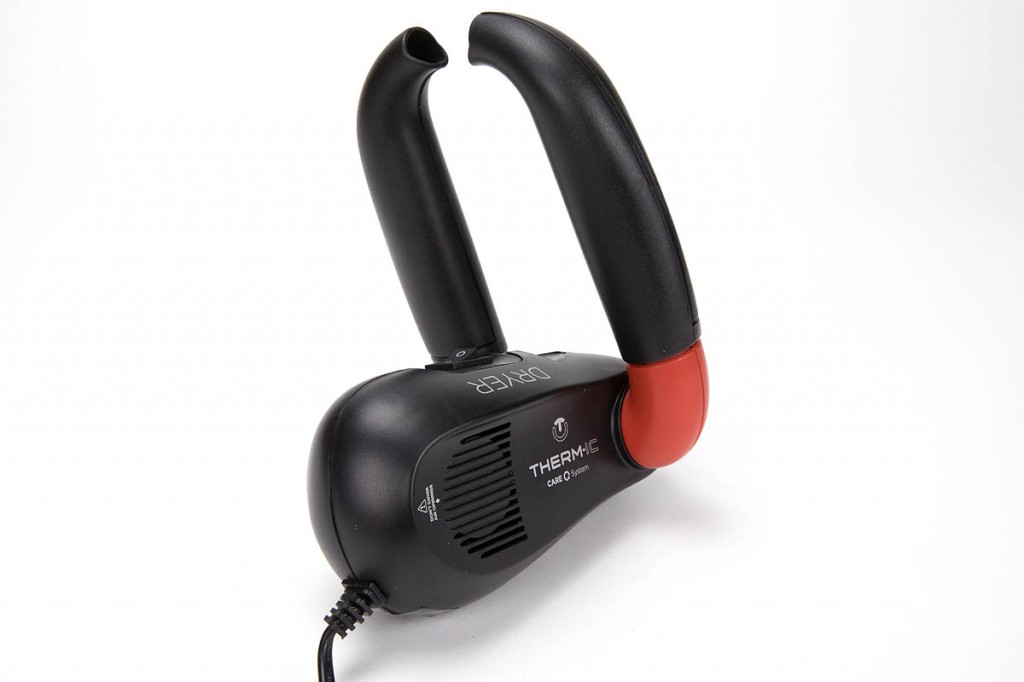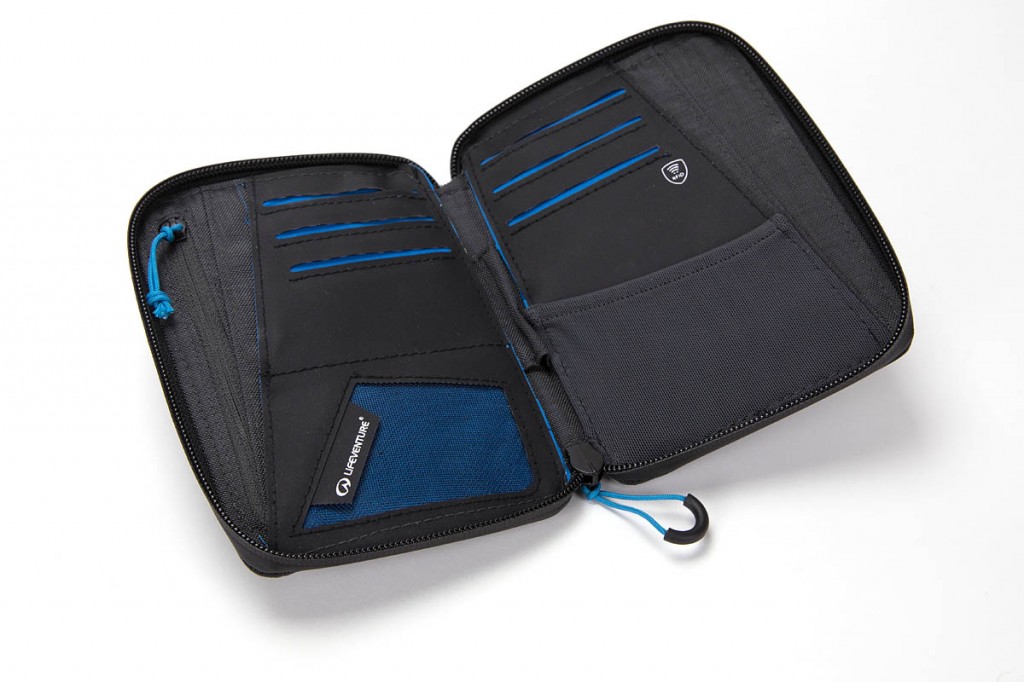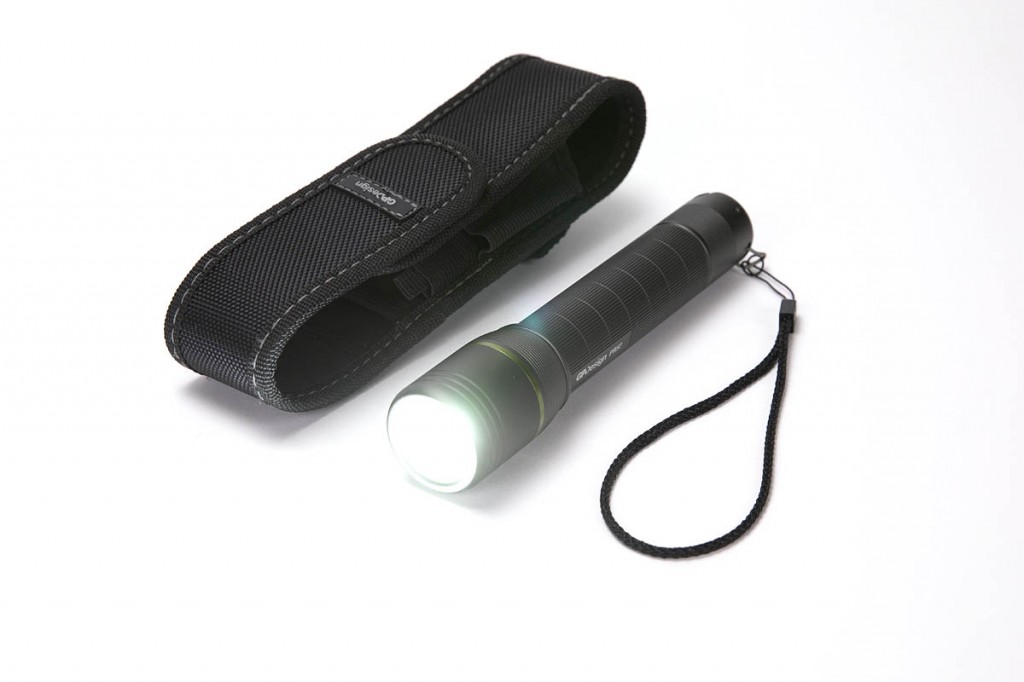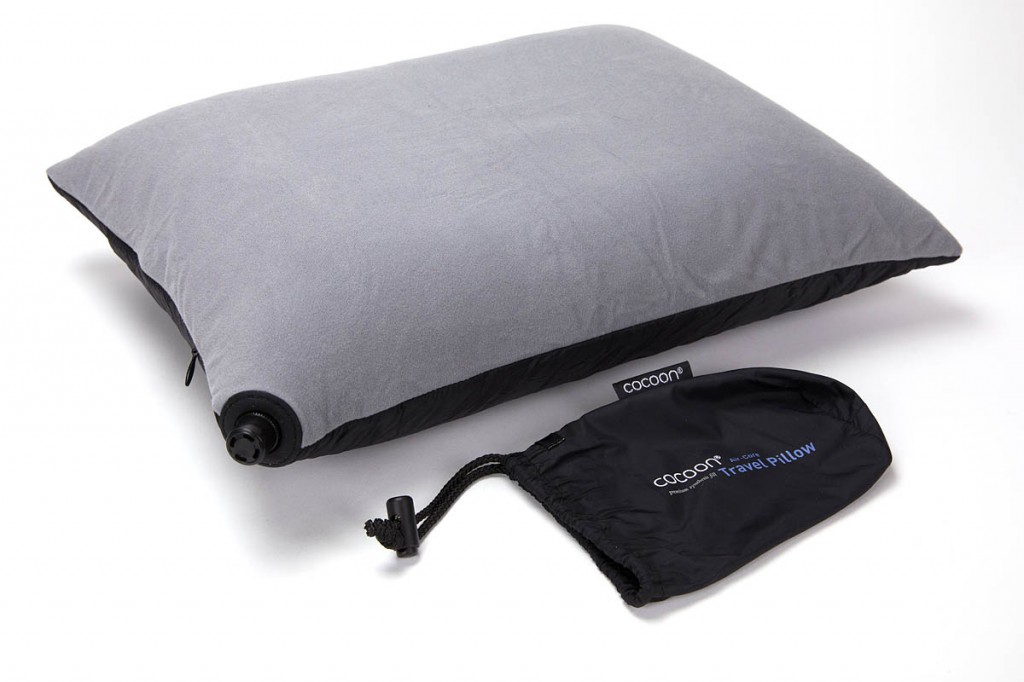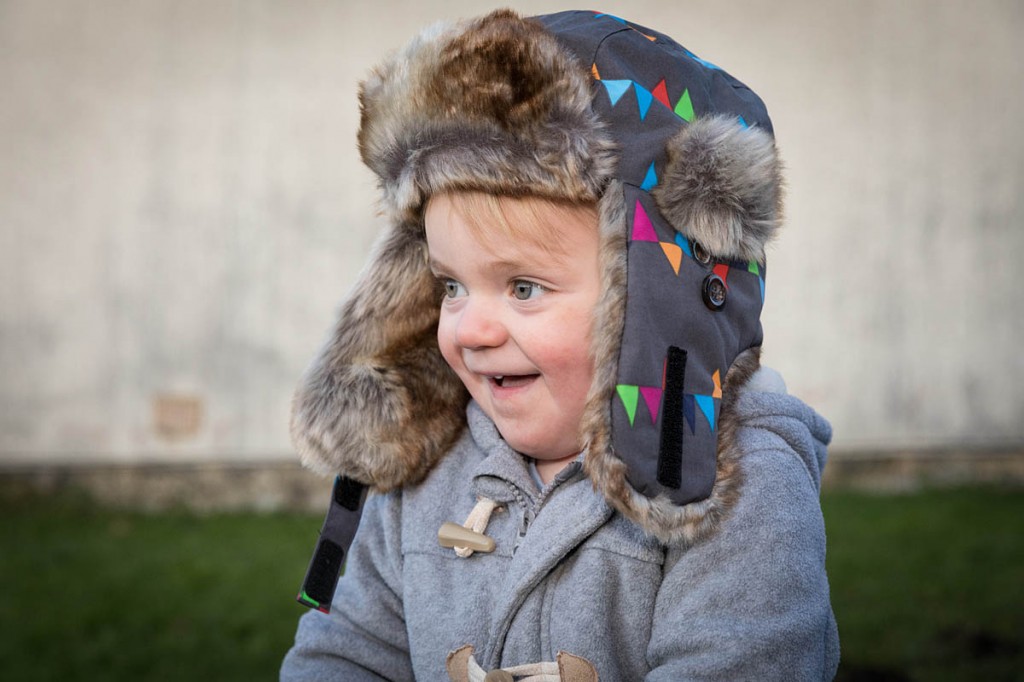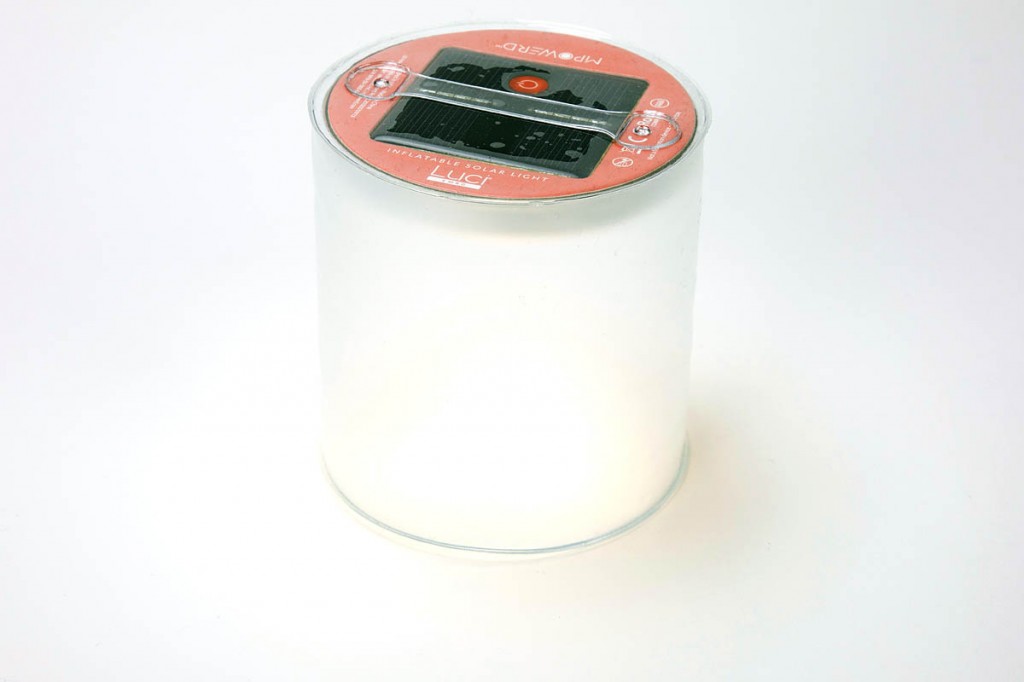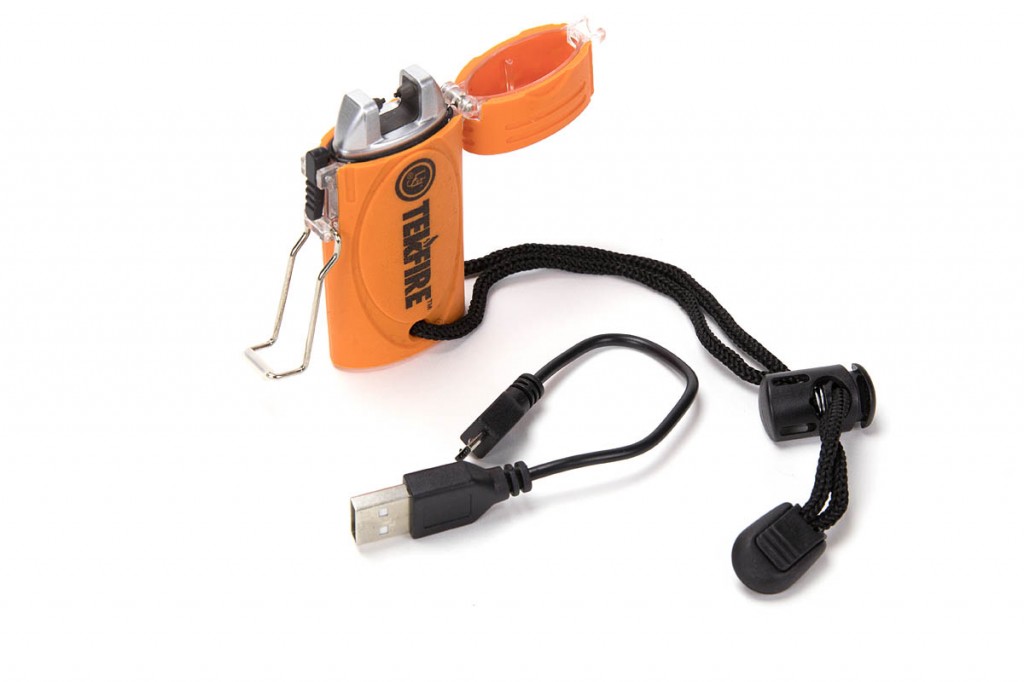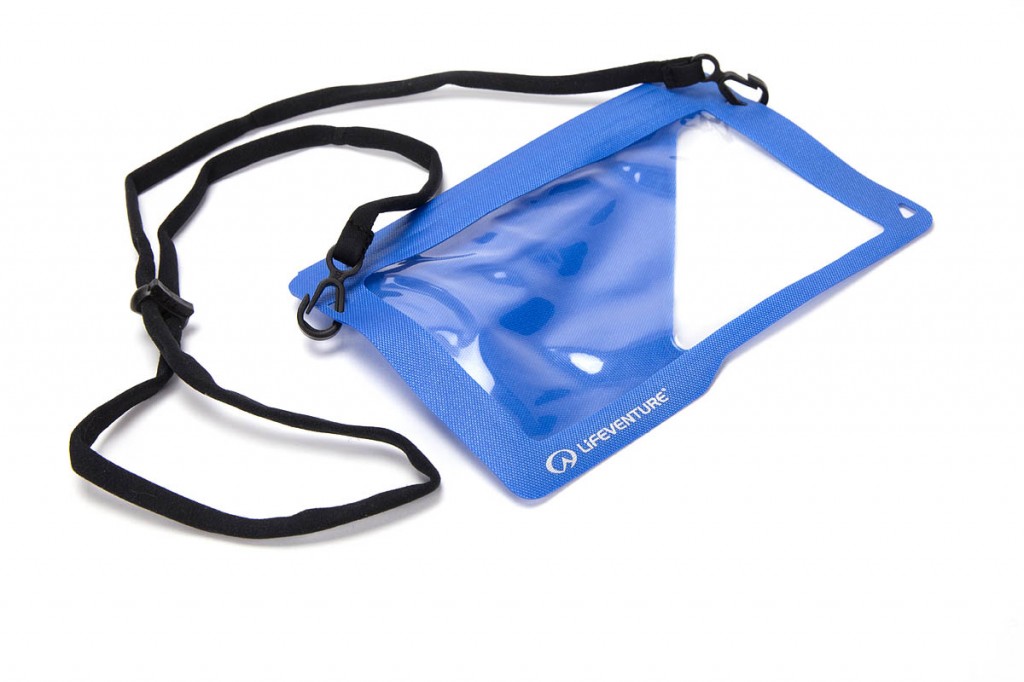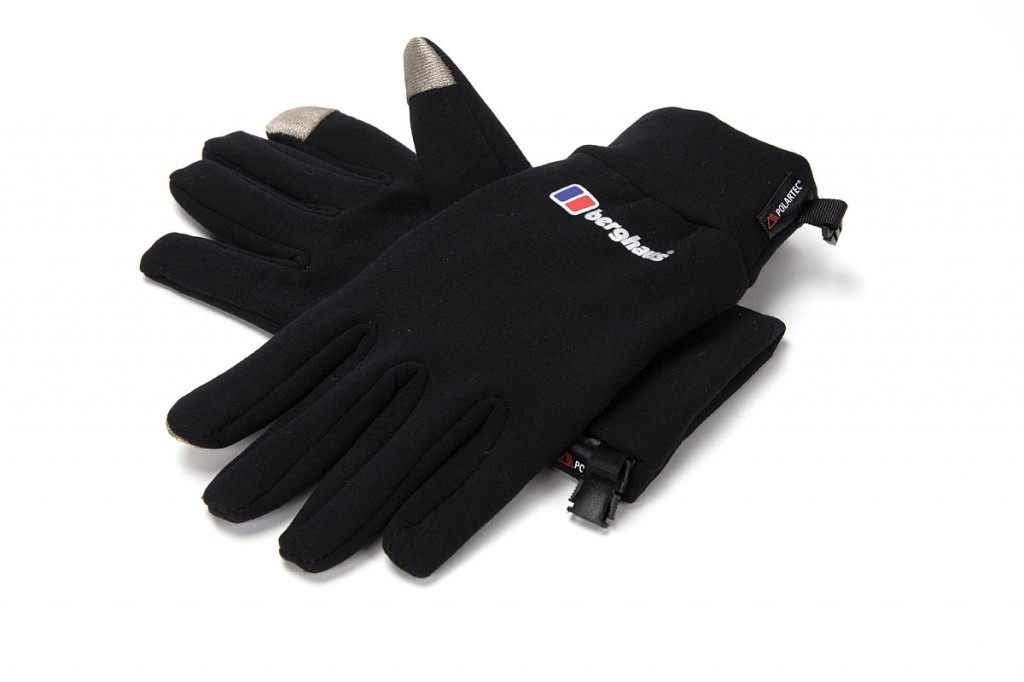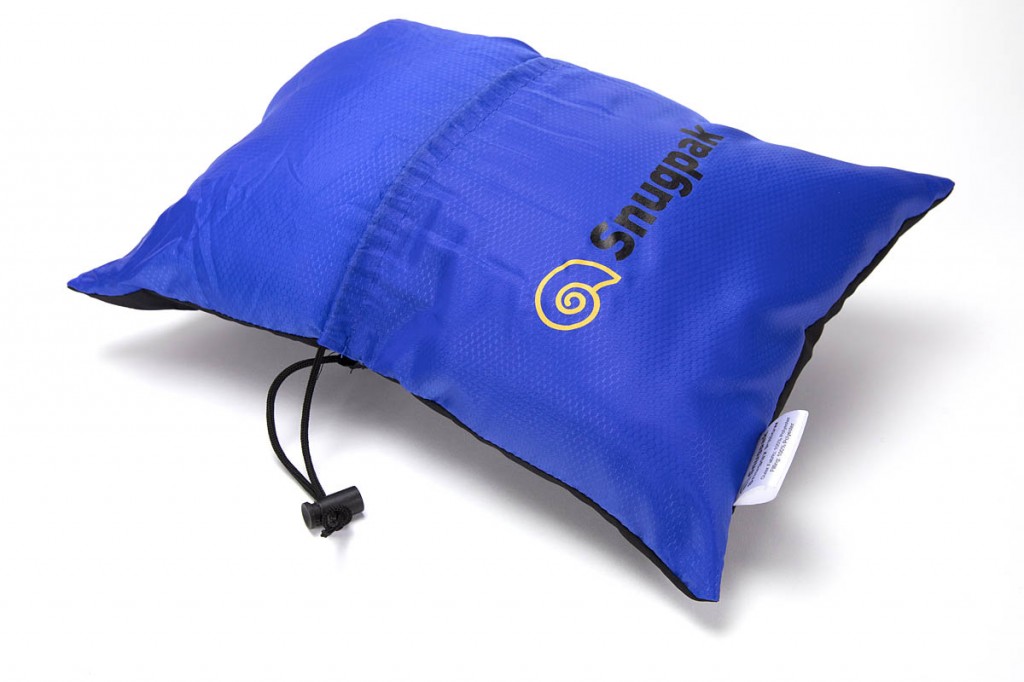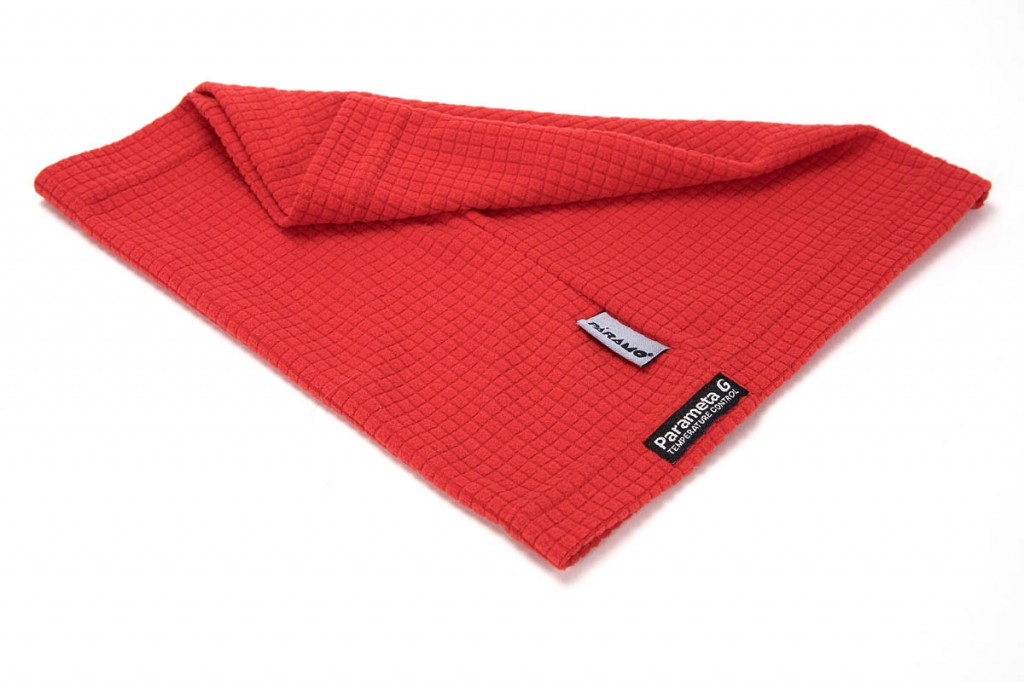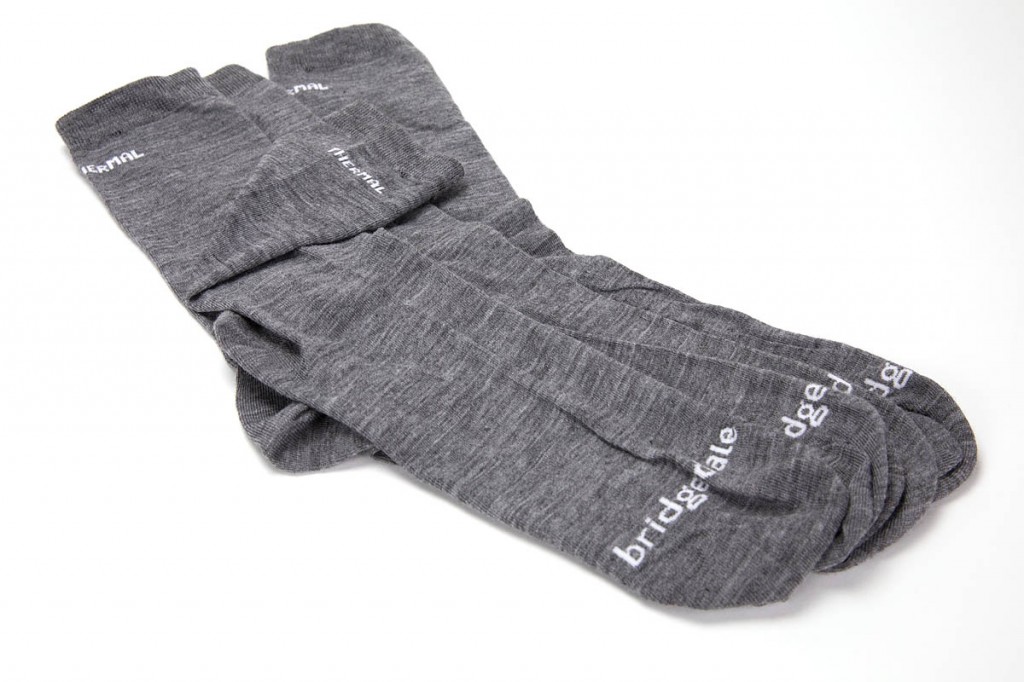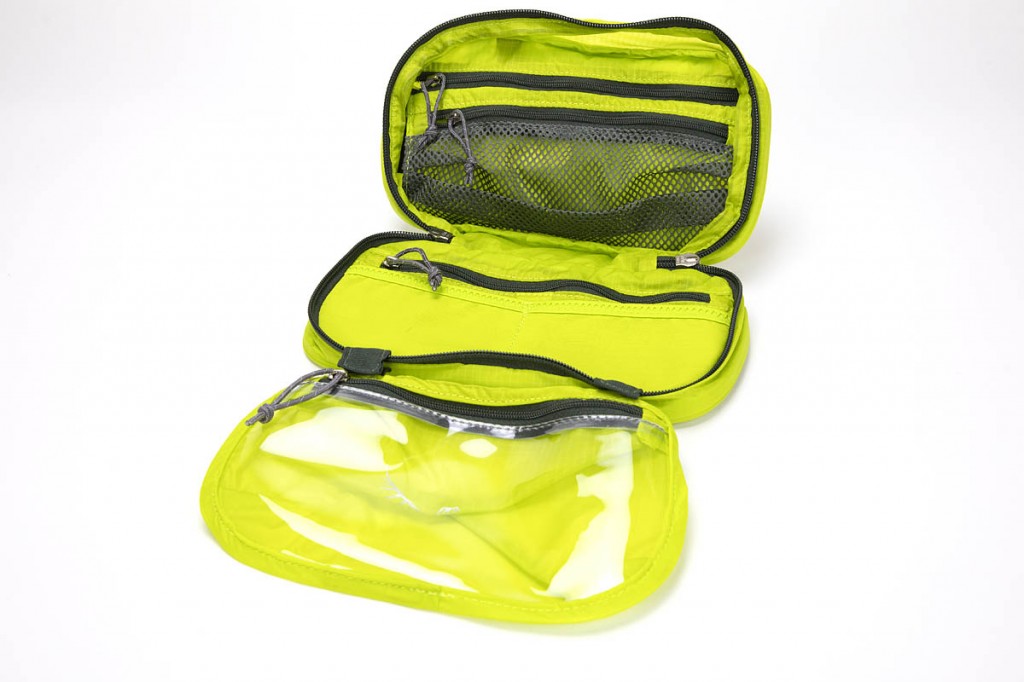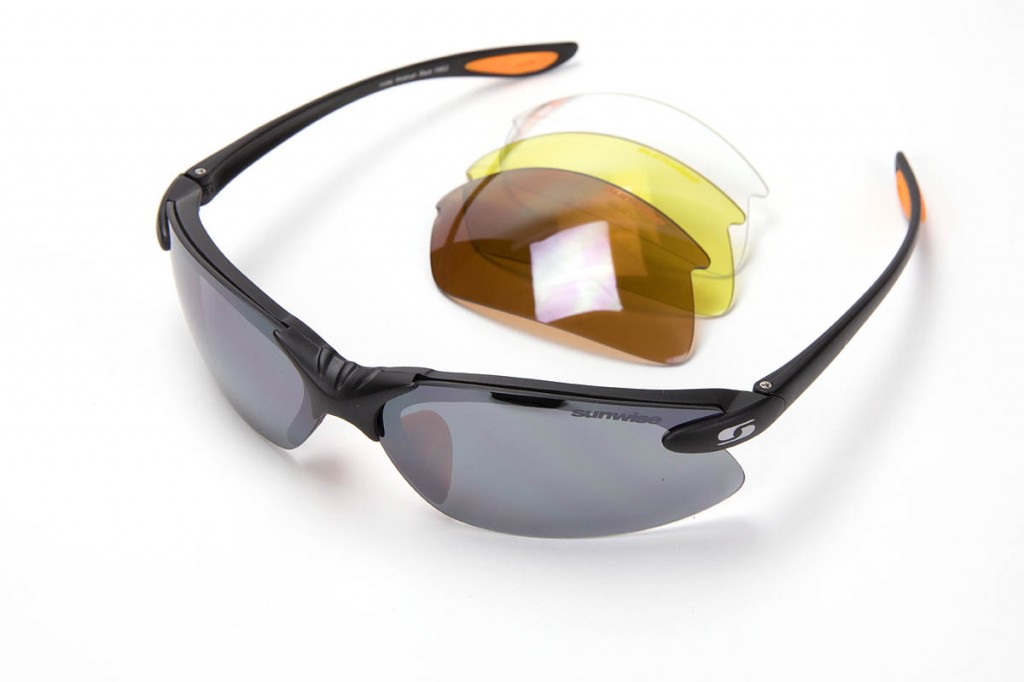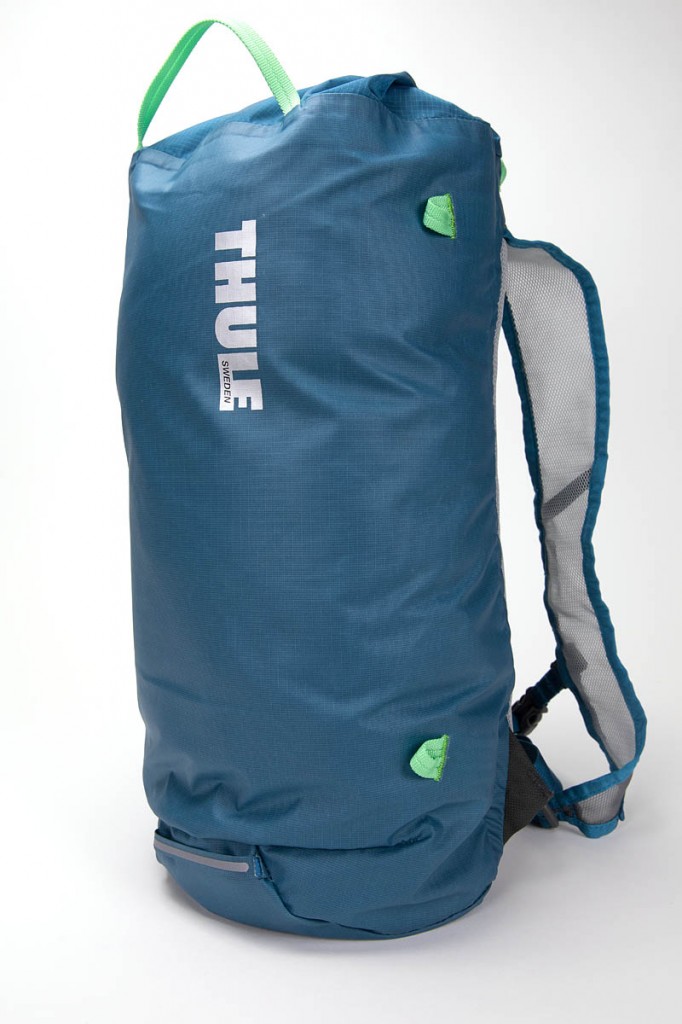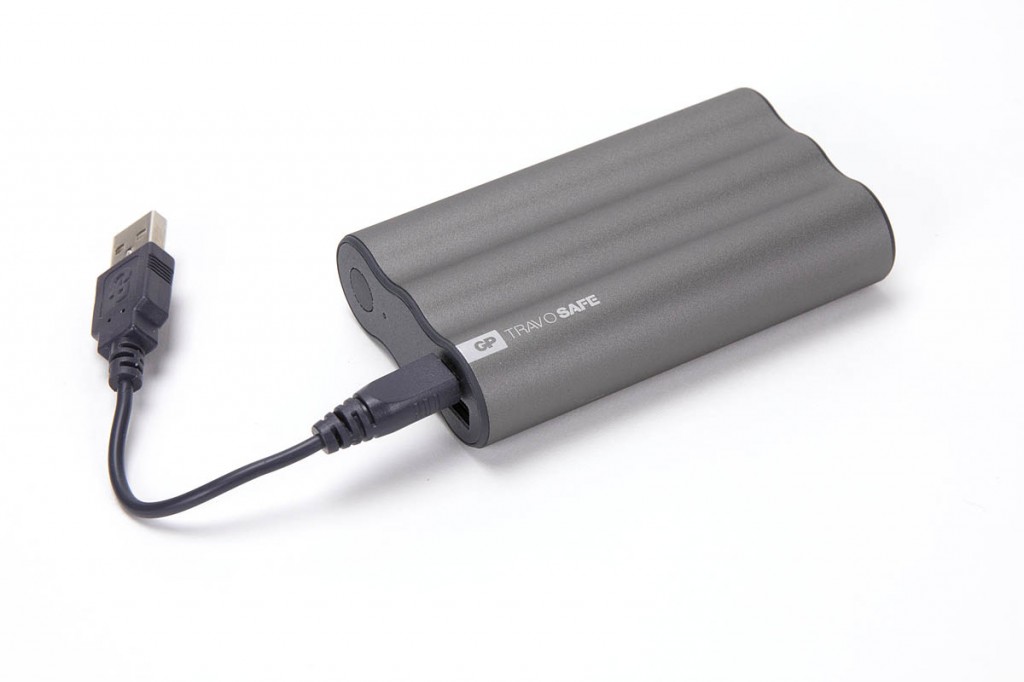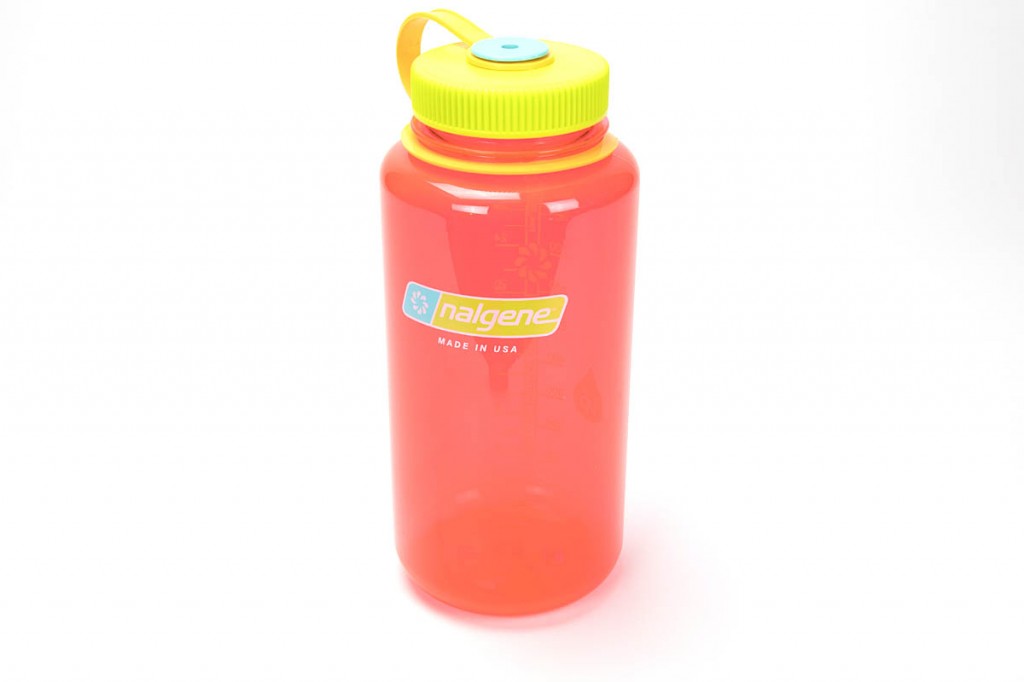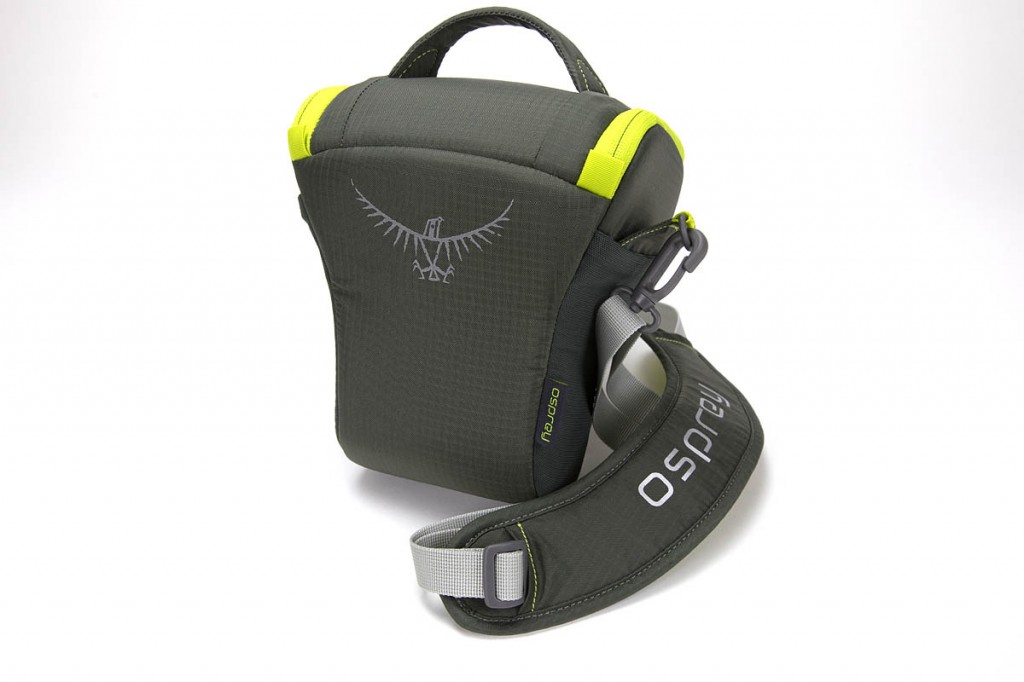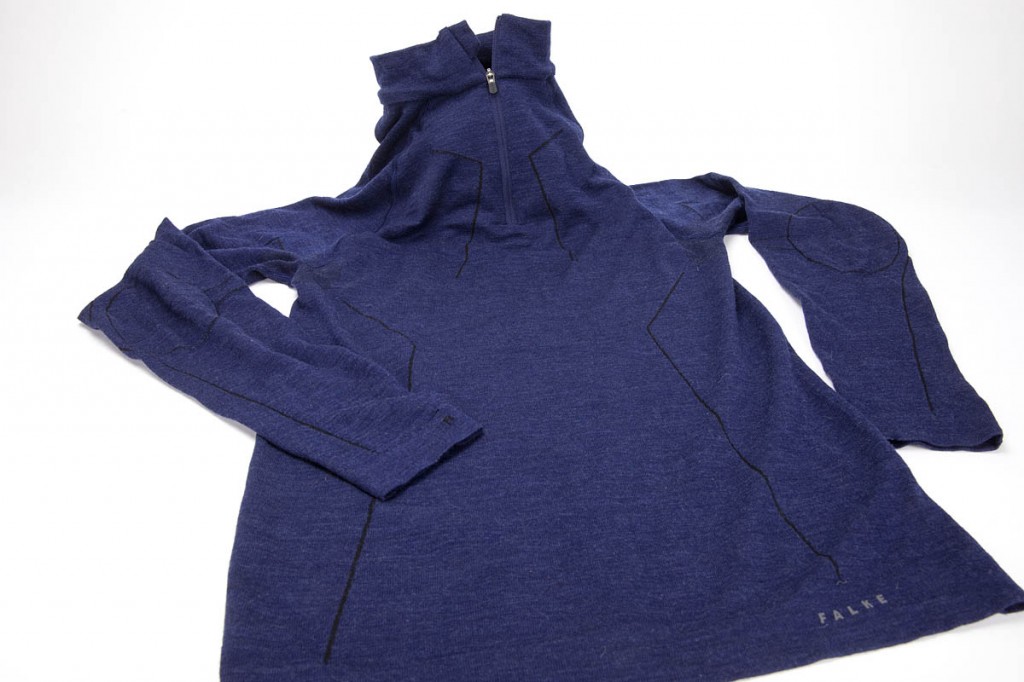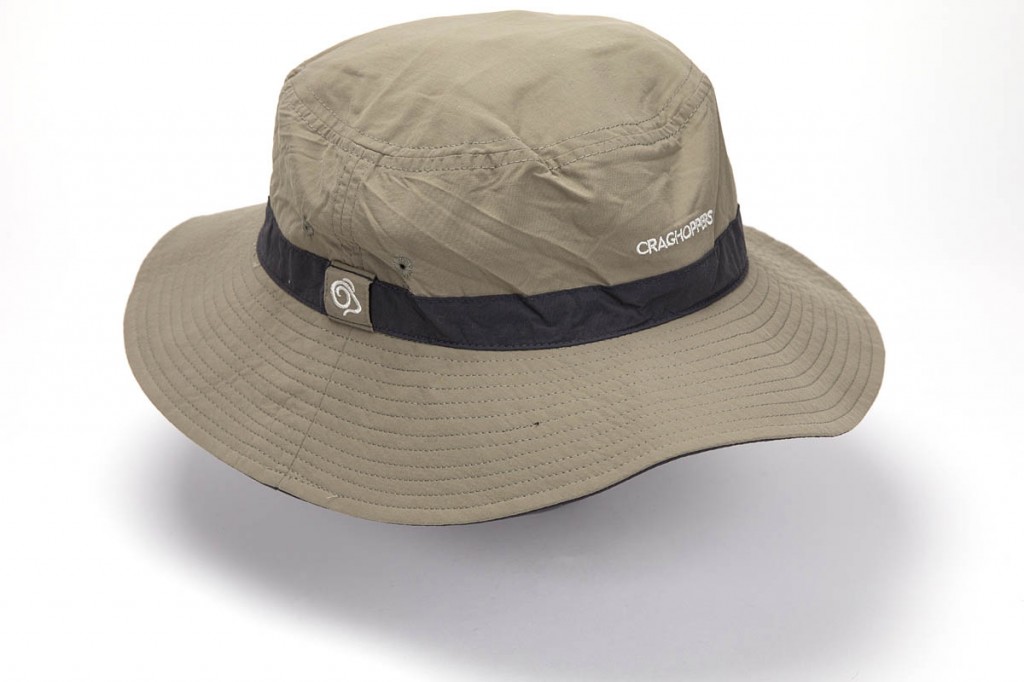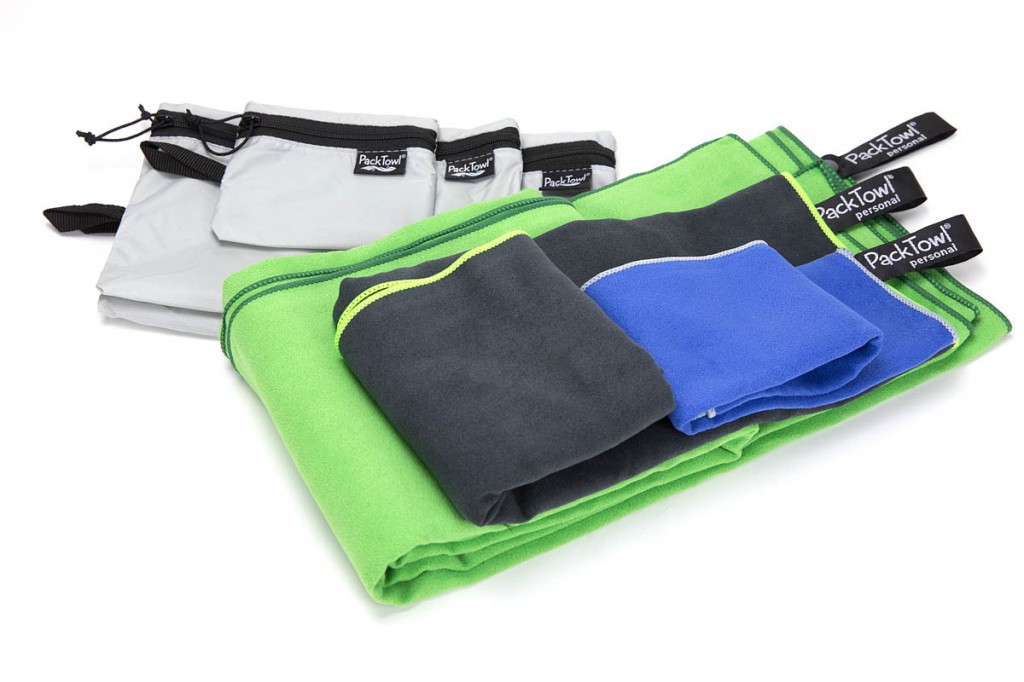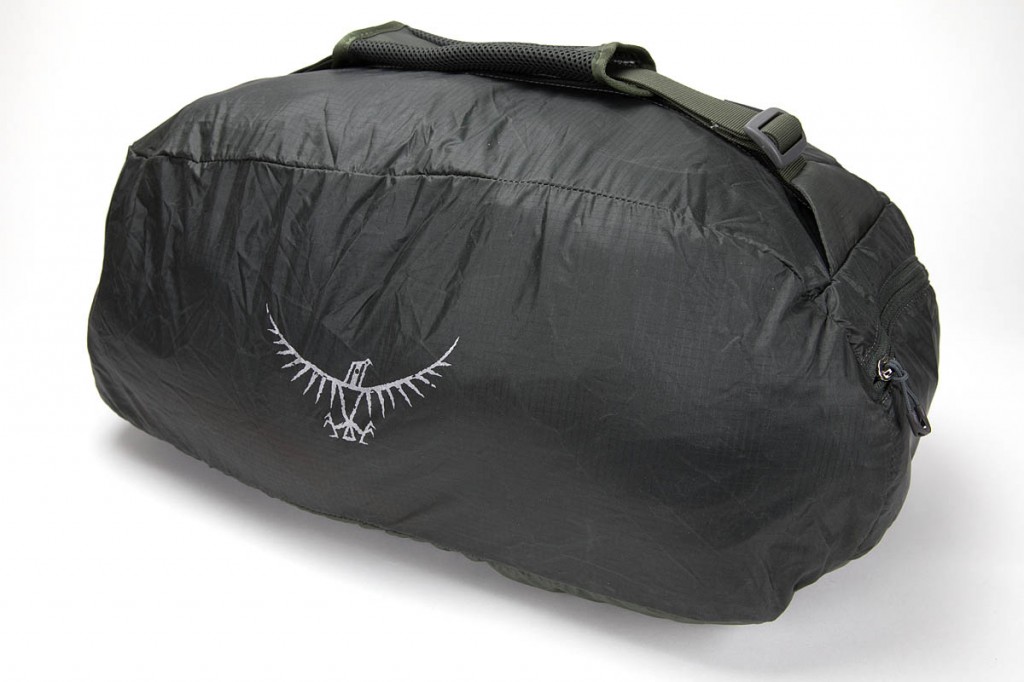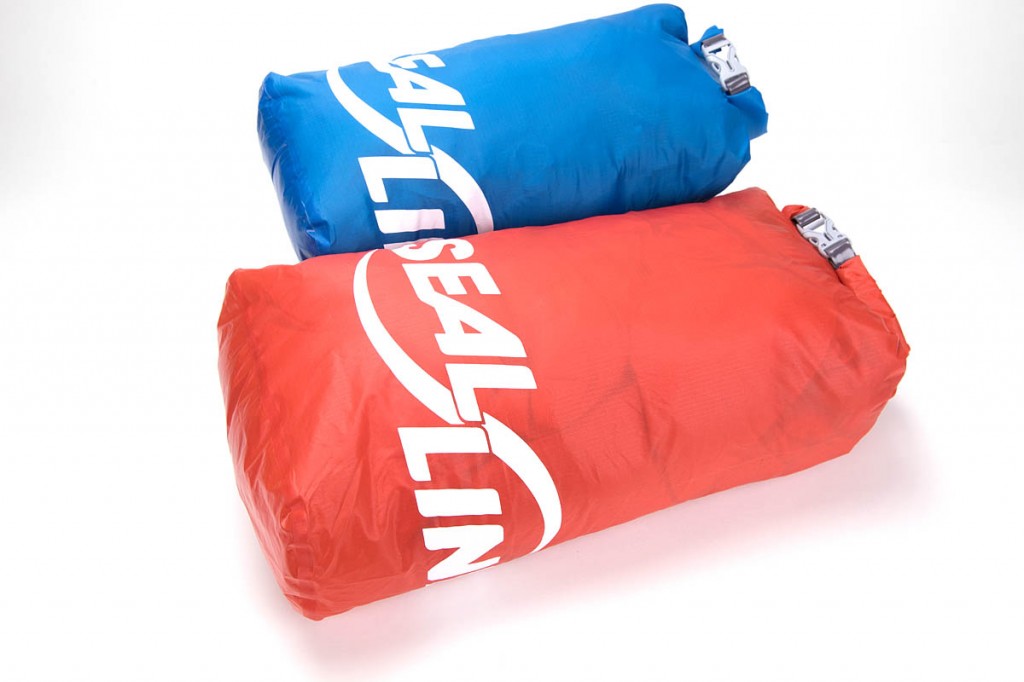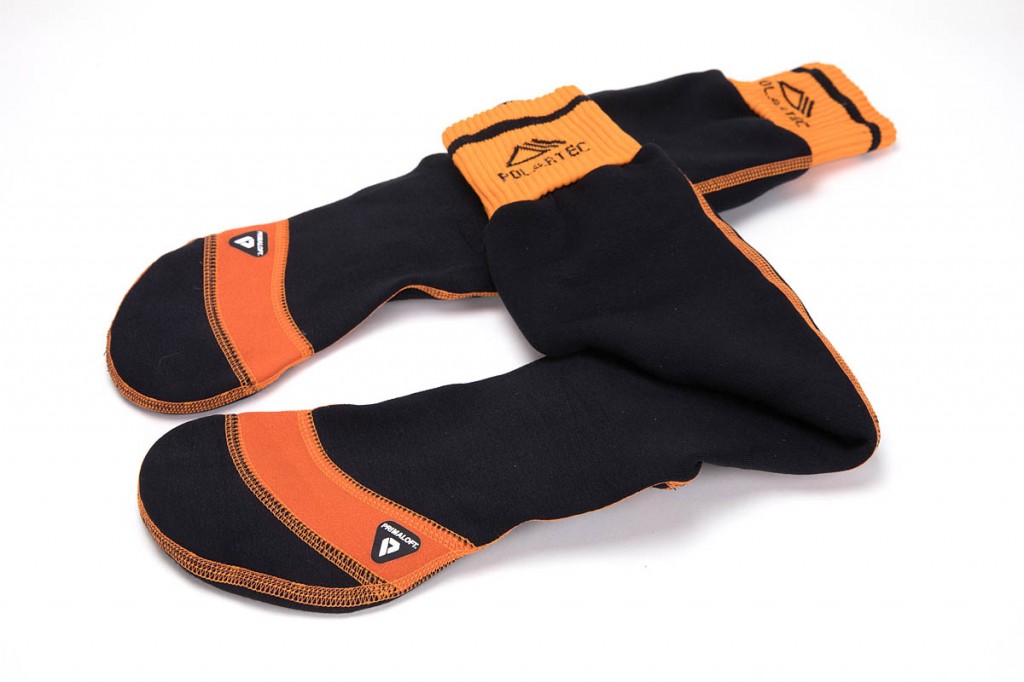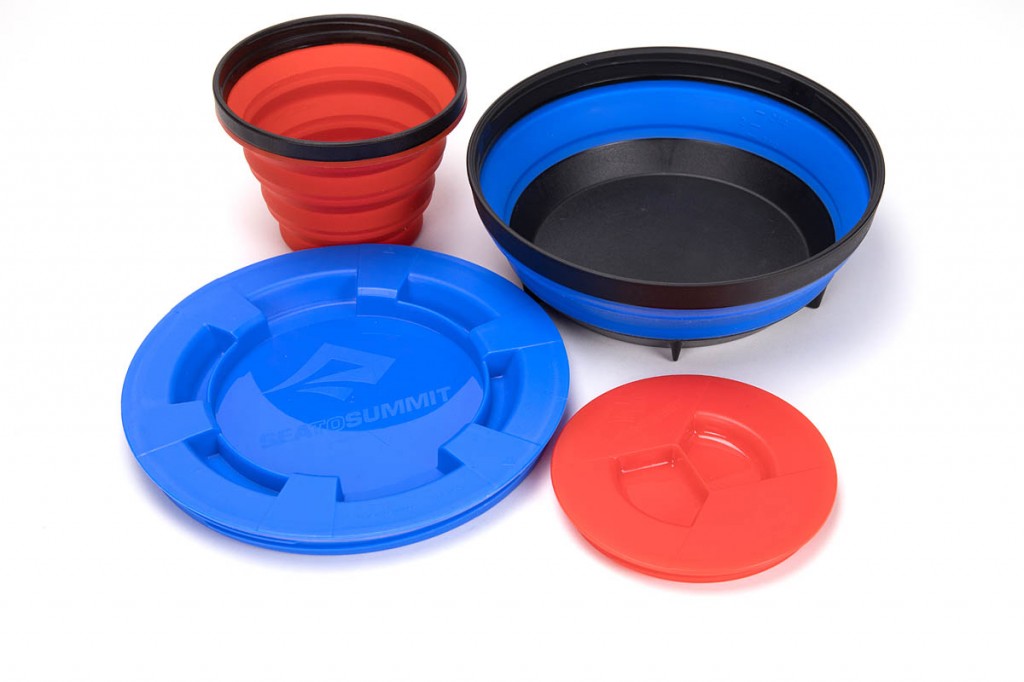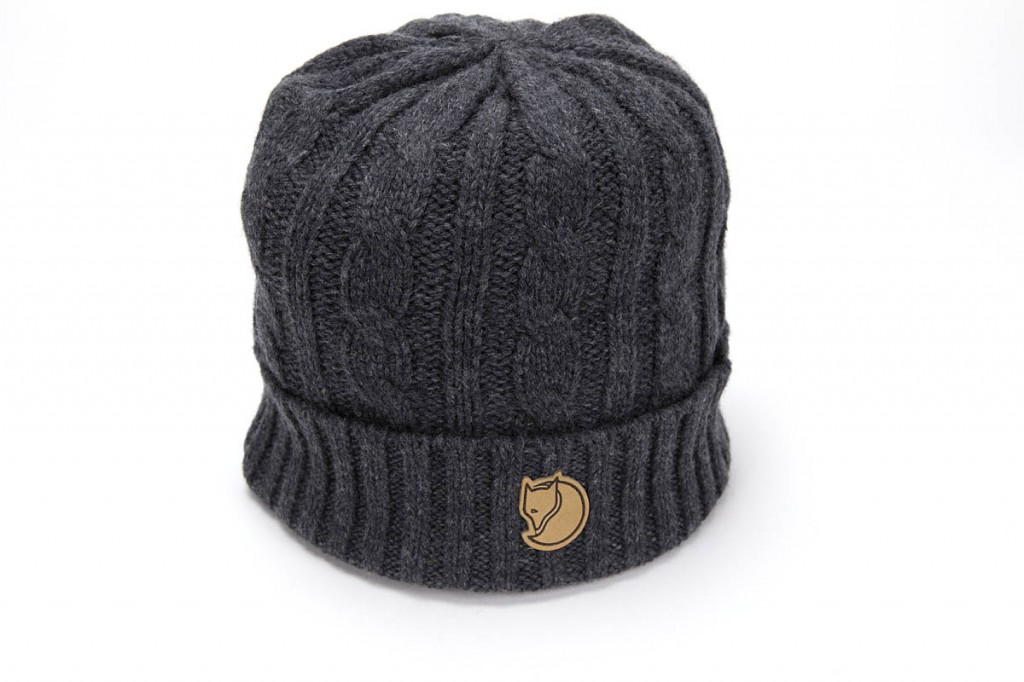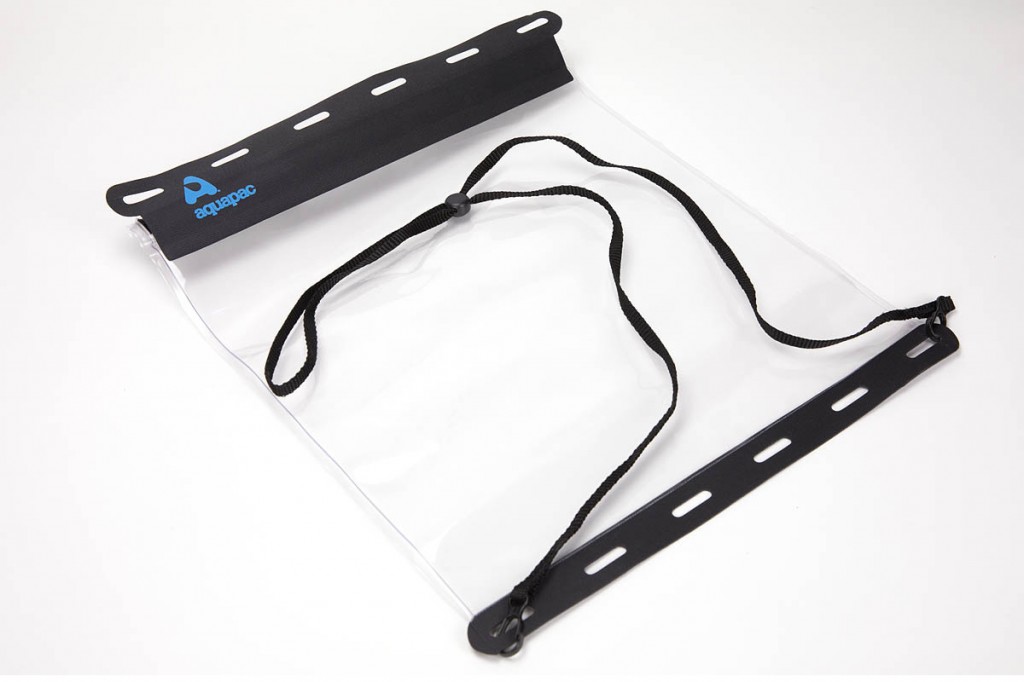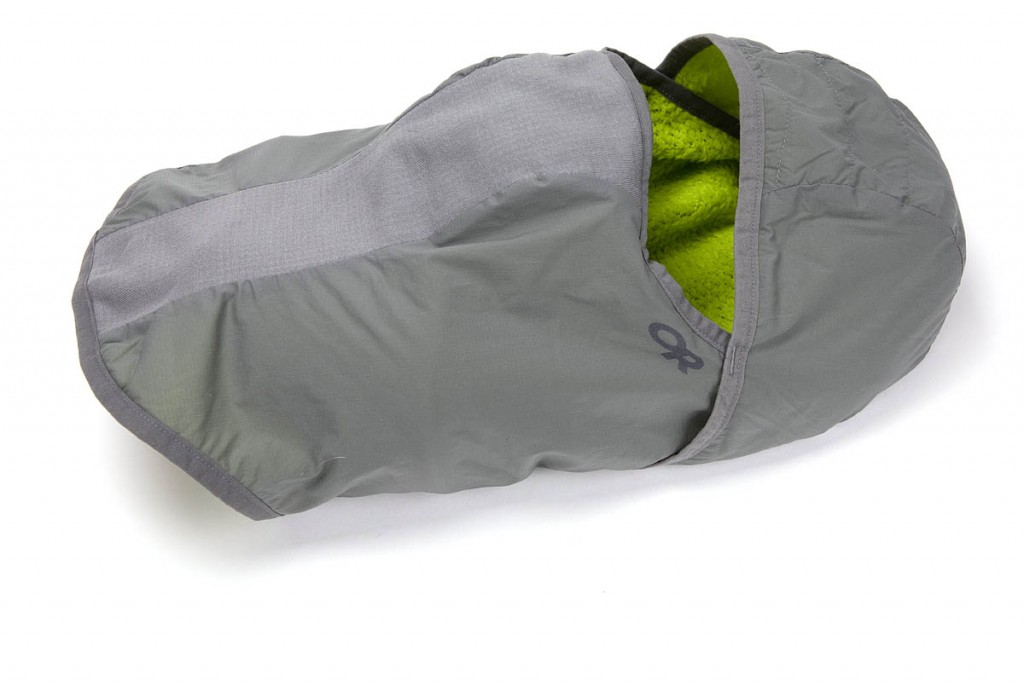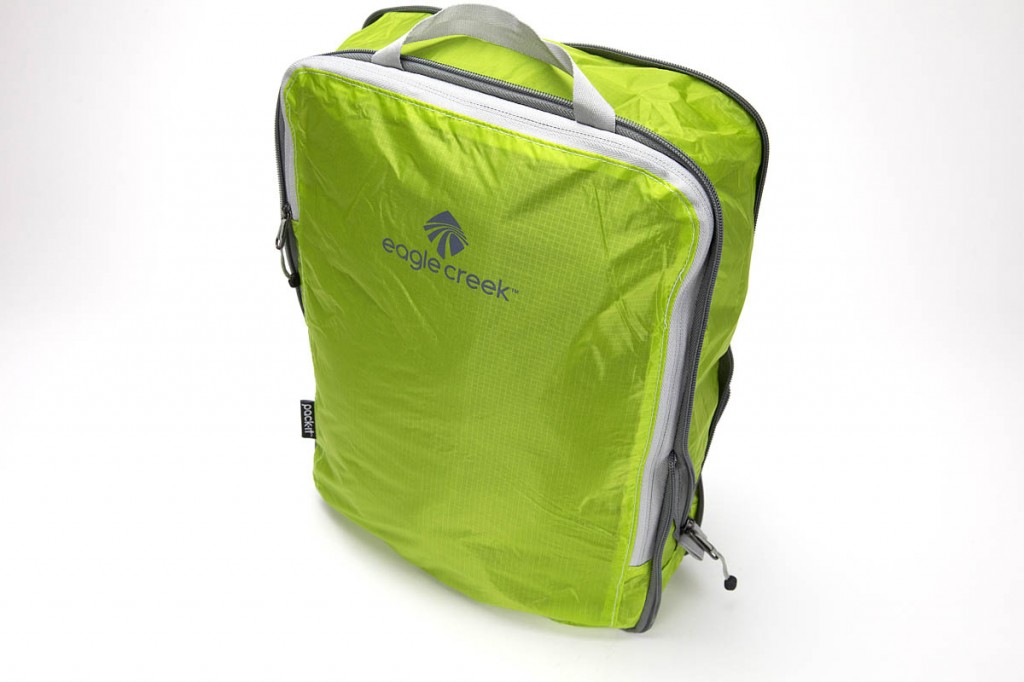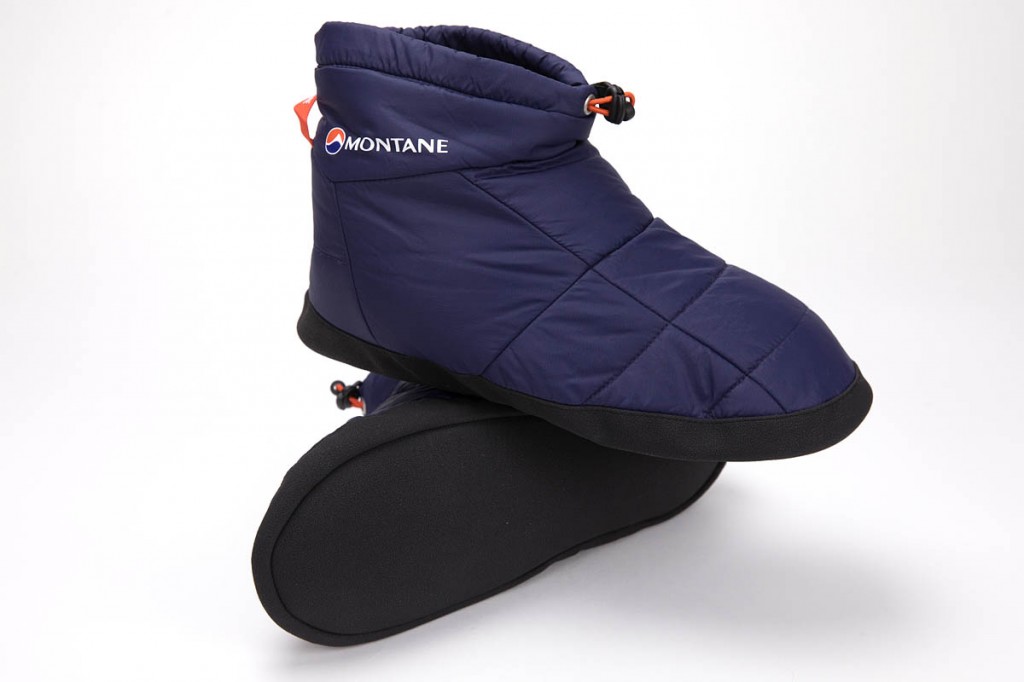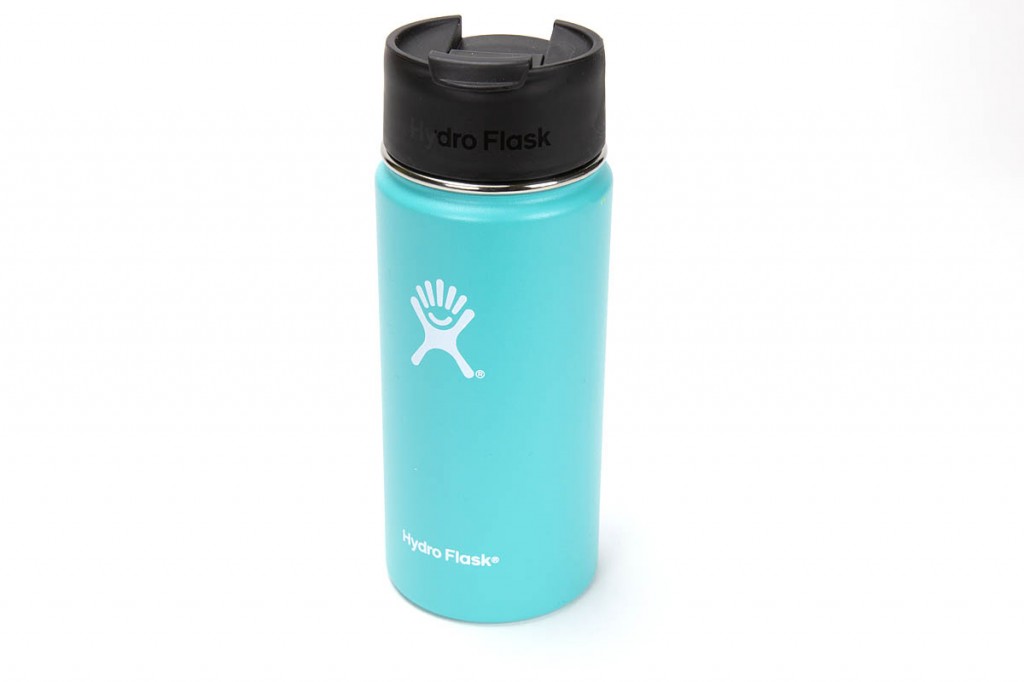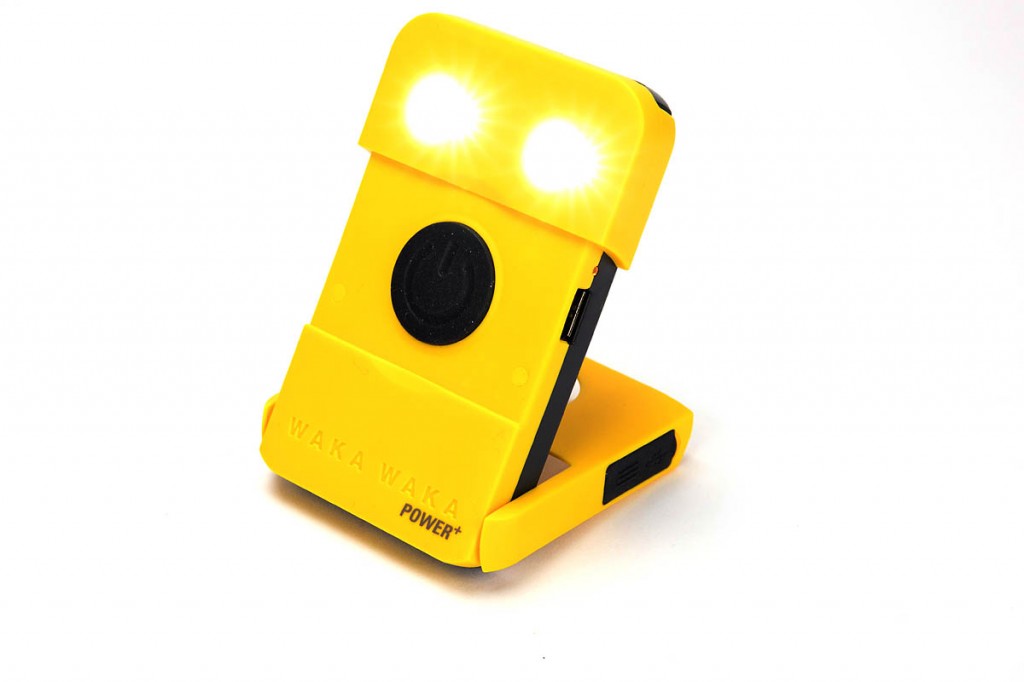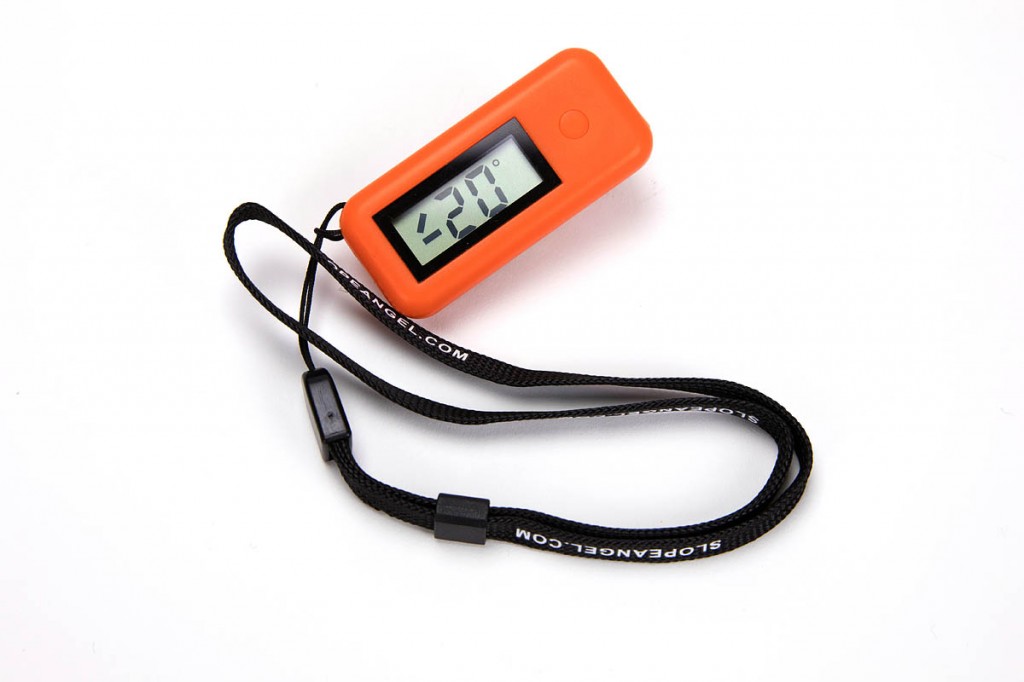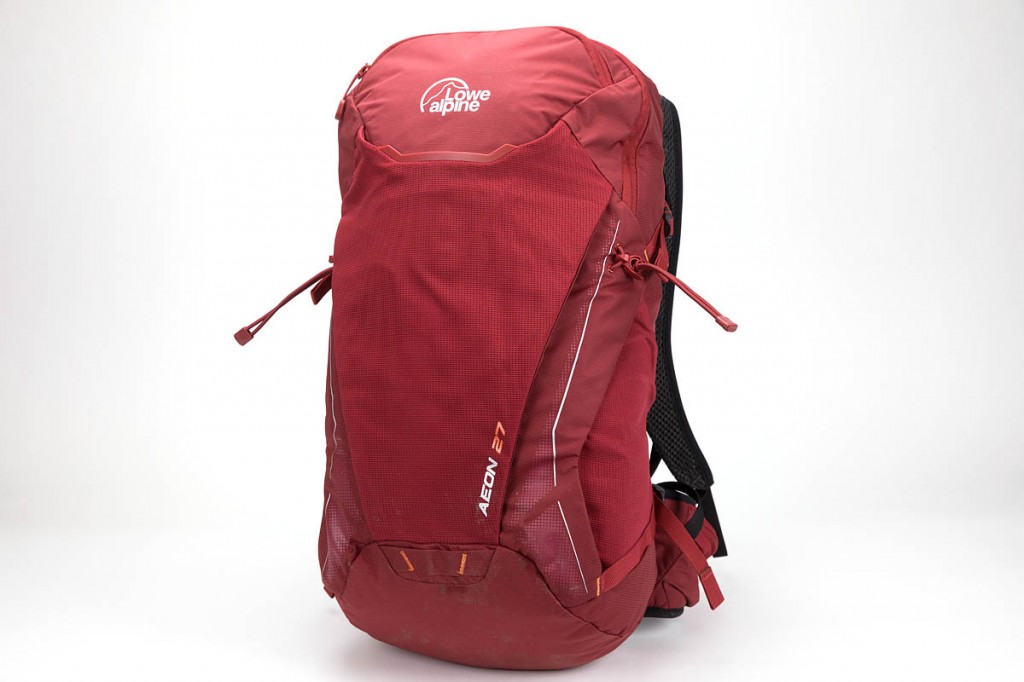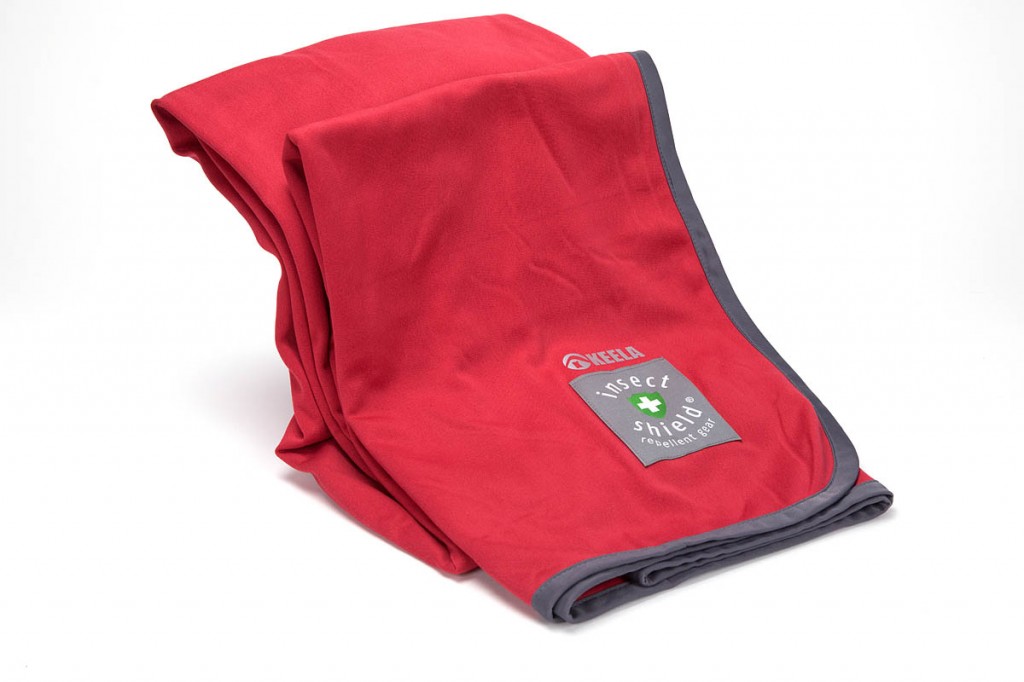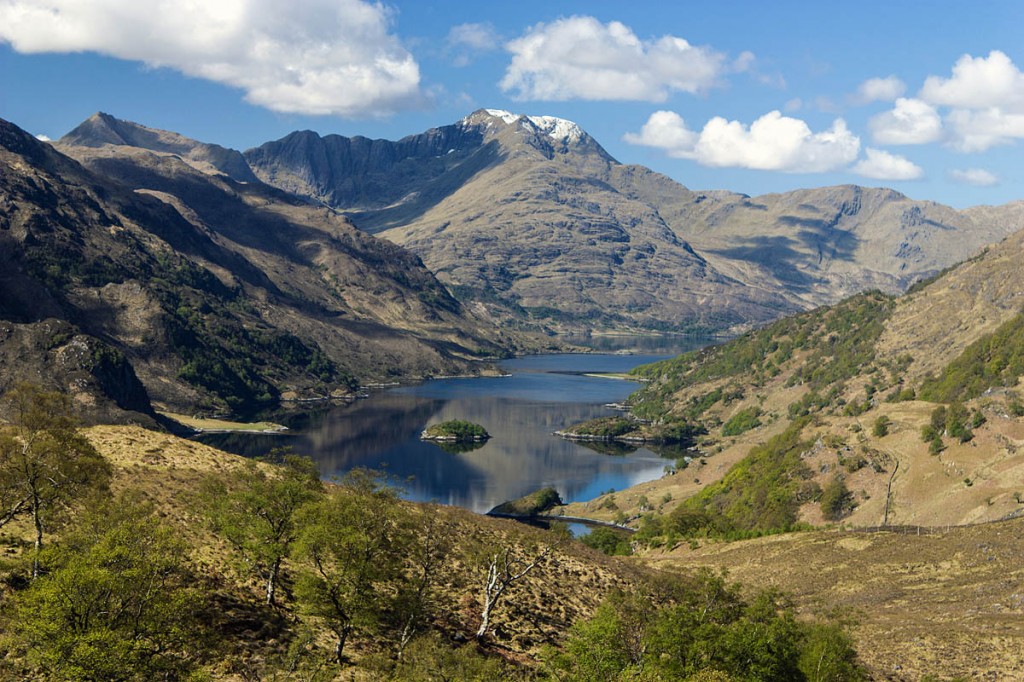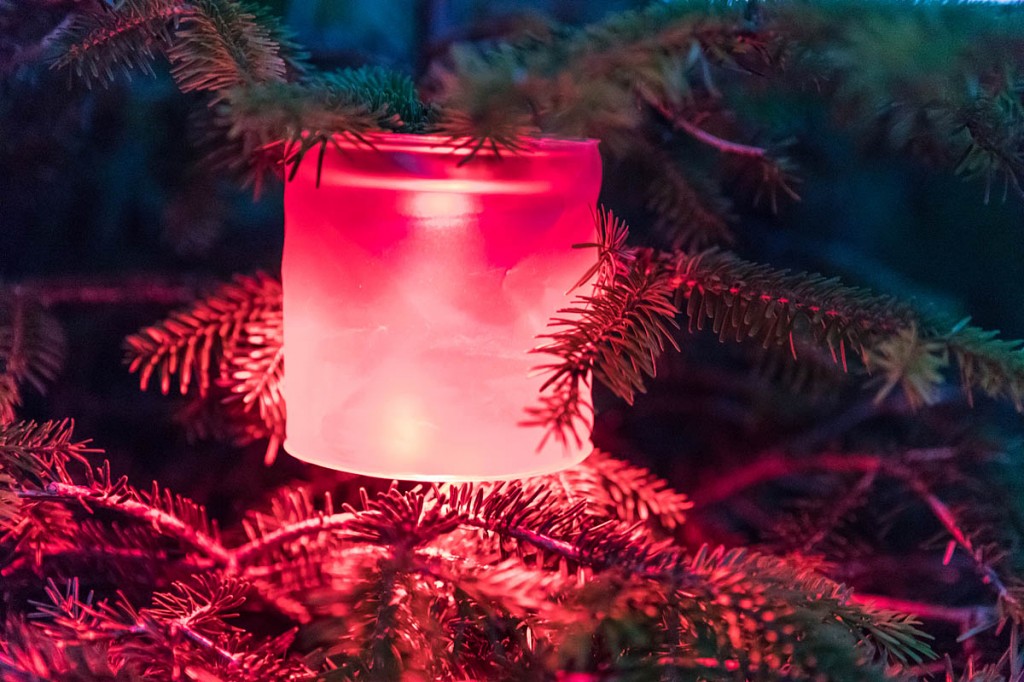
Helping things get festive, the Luci Solar Light illuminates the grough Christmas tree. Photo: Bob Smith/grough
Christmas is fast approaching and the outdoor enthusiast’s thoughts might well be turning to those little gadgets and gear that may enhance his or her excursions into the hills and countryside of the UK and farther afield.
So what to buy the outdoors fan? We’ve spent the past few weeks putting a selection of goodies to the test. We think your typical outdoors type will appreciate waking up on Christmas morning to find these little gifts filling their stockings.
So, here we go with grough’s great big Christmas gift guide 2017.
Therm-ic Boot Dryer
Price: £45
Weight: 512g
Wet boots, shoes and gloves are unavoidable for anyone heading into the great outdoors in the UK.
The traditional method of drying out your boots is to stuff them with newspaper, but here’s a high-tech answer to the problem.
The Therm-ic Boot Dryer is an odd-looking contraption, but it really works and is simple to use. It has a central unit containing the motor, fan and heating element and two ‘horn’ looking extensions that you place into your wet boots.
You simply plug it in and turn it on and wait for your boots, shoes or even gloves to dry. The nozzles should be pointed at the toe of the boot or shoe and, for higher boots such as winter mountaineering or ski boots, the nozzles extend and can be locked at their maximum length if needed.
The nozzles can be adjusted to the required angle and, in operation, the Therm-ic Dryer emits just a quiet hum. The air produced is about 20C above ambient temperature, which is warm enough to dry boots without damaging them.
Our completely sodden boots were totally dry after about six hours with the Boot Dryer.
The Therm-ic Boot Dryer is a great little gadget that gets used every time we’ve been out in the wet British weather and definitely beats newspaper as a drying system.
Details are on the Therm-ic website.
Rab Rock Bobble
Price: £23
Weight: 114g
The bobble is back. Keep your head warm on the hill with this modern version of the traditional headwear that has been a staple of the outdoor community for decades.
The Rab Rock Bobble is knitted from 100 per cent acrylic and is topped by a contrasting colour bobble. The Rab logo is knitted into the design and the hat is light enough not to overburden a walker or climber when out on the winter hills.
The stretchy cap hugged our head and kept the wind out on some very cold days, helping us stay warm as the temperatures dropped. The ribbed turn-up provides a little extra insulation at the forehead and ear areas and the hat can be washed at 30C to save on energy. The synthetic design provides good warmth but feels pretty much like natural knitwear.
We liked the jaunty design in green and red that even had a bit of a Christmas feel, and the Rock Bobble can be had in four other colourways. More details on the Rab website.
Lifeventure RFiD Mini Document Wallet
Price: £19.99
Weight: 110g
When you’re heading for foreign climes, this great little mini document wallet holds all the paraphernalia you need to get to your flight or train, with the added protection of a nickel and copper coated polyester fabric outer case that stops information from your contactless cards being transmitted when you don’t want it to be.
The 16cm x 11.5cm wallet has an outer zip to keep its contents secure. Inside, there are four slip pockets, big enough to take a passport. We used the pockets to stash our euros on one side and sterling on the other. There’s also a zipped pocket that we used for our coins. One of the slip pockets was used for our boarding pass, and there’s also an external slip pocket, not RFID protected, that can be used for this purpose.
There are seven card pockets, one of which has a mesh cover for an ID card or driving licence. An elasticated pouch enables a standard smartphone to be slotted in.
The Lifeventure wallet also has a pen loop in the middle.
Normally at the airport, everything’s stuffed into different pockets, with boarding cards, passport, foreign currency and payment cards spread around. The beauty of the mini travel wallet means everything is carried together, making those stressful foreign departures just a little easier, and the wallet fits into a jacket pocket too.
All we need to do now is plan another overseas trip.
More details of the RFiD Mini Document Wallet, which comes in three different colours, are on the Lifeventure website.
GP Design PR57 torch
Price: £84.99
Weight: 258g (including lead)
This top-of-the-range rechargeable torch delivers serious illumination and is made from aircraft-grade aluminium.
On full power, the 1,000 lumen beam reaches 180m into the dark, and the PR57 is water-resistant to IPX-4 level. The torch will also stand being dropped from a height of 1.5m.
To charge the GP Design torch, you unscrew the rear cap to reveal the Micro USB socket. Use the supplied lead to plug into a power source. This can be a suitable PC, power bank, car charger or mains USB plug. A red light means it’s charging; a green one it’s fully powered.
Disconnect the lead and screw the cap back on, and the torch is ready to use. Control is simple: there’s a two-part switch on the end of the barrel. The main rubber-feel switch turns the torch on, while the outer mode switch, which has raised metal dots, toggles between full power, half and quarter outputs.
Half pressing the main switch will keep the torch on while it’s held down. Pressing the mode switch while the unit is turned off activates a rapid strobe light; for constant strobe lighting (not sure why you’d want to do this, other than a disco on the campsite or to induce an epileptic seizure) hold the mode switch down for three seconds while the torch is on.
The full beam is so bright, we’d caution pointing it at anyone close, especially as it always turns on at full power.
Beam focusing is neat: just slide the head’s metal sleeve back for a wide light; forward for concentrated zoomed-in beam. A stiff clockwise twist of the head locks it in any given position.
We found the PR57 very useful on the hill for picking out distant land features at night. We used the torch to supplement our headtorch and it was great to have such a powerful light when needed. This GP torch should provide more than an hour’s illumination at full power, and can be recharged using a power bank and its USB lead.
It comes with a holster, which can be attached to a belt. More details on the GP website.
Cocoon Air-Core Pillow
Price: £18.95
Weight: 184g including stuff bag
We love camping, but we do insist on one or two creature comforts, even in the wildest of locations, and a pillow is one of our essentials for a good night’s sleep. Yes, you can pack a stuffsack with your clothes, but we always find a lump sticking in our ear or an errant zip keeping us awake.
So we were happy to head to the hills with the Cocoon Air-Core Pillow in our pack. This version has a nylon underside and a polyester microfibre fabric on the top side, which provided a snug, warm sleeping surface and stopped the head sliding off the pillow well too.
The inflatable core of the pillow can be blown up in about four breaths. The twist-closure valve is similar to those found on inflatable sleep mats and the inner air core is made from tough fabric. There’s a polyester insulated layer either side of the cover and the inflatable core can be removed to enable washing of the cover.
We found the Cocoon Air-Core Pillow kept the head at just about the right height, either when lying on our back or on our side in the tent. Letting just a little air out of the pillow made it a bit softer while still supportive.
The deflated Cocoon pillow fits into a stuffsack that packs down to just 11cm x 8cm diameter, and the Air-Core Pillow adds only 184g to your pack, which we reckon is a small price to pay for a comfortable night in the sleeping bag and a good night’s sleep.
The Cocoon Air-Core Pillow is distributed by First Ascent.
Isbjörn Squirrel Winter Cap
Price: £40
Weight: 128g
This dinky little hat will help keep your little one’s head nice and warm while in the great outdoors.
The Squirrel features PrimaLoft Black insulation to keep the cold out, and the shell of the cap is 100 per cent nylon with a durable water-resistant finish. The Isbjörn cap has fake fur trim at the forehead, neck and chin-strap areas. The wide chin strap has a hook-and-loop adjuster to get a good fit, and at the back of the hat is another adjustment strap with a metal buckle fastener.
The ear holes can also be closed off by a fake fur cover if things get really cold.
The Squirrel Cap has good green credentials too, with bluesign approval, fluorine-free Bionic Finish Eco water repellency and 60 per cent recycled content in the PrimaLoft insulation.
Our model Stanley’s mum said the Isbjörn cap keeps his head and ears nice and warm on cold winter days when they go for a walk. The quality was also very good, she said.
The Isbjörn Squirrel Cap comes in three sizes and eight different colours. Details on the Isbjörn website.
Luci Emergency Inflatable Solar Light
Price: £19.95
Weight: 66g
Don’t be fooled by the name of this handy little gadget. The lamp has lots of uses apart from an emergency light and we’ve used it around the house and in the tent.
The light is powered by sunlight which, admittedly, is in short supply in the UK in December, but placing the Luci Light on a windowsill for a day provided enough charge to supply a good light.
For camping, the little Luci light is great. Deflated, it packs down to a disc little more than 1cm thick and 10cm diameter, though the valve does protrude and extra 2.5cm.
It weighs only 66g too, so is a great addition to the backpacker’s rucksack.
A solar panel is incorporated into the end of the Luci light, with a simple push button switch that cycles the LEDs through half power, full power, flashing white LEDs then the emergency SOS sequence first with the red LED then the white ones.
Illumination comes from three white LEDs and a single red one. Inflating the Solar Light gives it a height of 11cm. The sides are translucent plastic, which gives a nice diffuse light which we found ideal for reading in our tent. The top of the Luci Emergency Inflatable light is clear plastic, providing a more direct light.
The battery is a rechargeable lithium ion one, which should give up to seven hours on the lower setting from a full charge. Eight hours in the sun should give a full charge. There’s no facility for charging any other way, but our Luci light charged adequately, even in the weaker winter light, with a day on the window sill.
The Luci light has a plastic hanging strip on the same end as the solar panel, and the lamp can also be stood on its end and is very stable. We didn’t find a use for the SOS sequence, happily, and to be honest it’s a bit of a gimmick but, who knows, if you’re stuck on a hill at night and needing rescue, it could be a godsend.
The Luci Emergency Inflatable Solar Light is a great little gadget that makes use of a free energy source – even in a gloomy UK winter.
More details are on the Mpowerd website.
UST Tekfire Fuel-Free Lighter
Price: £29.95
Weight: 62g including lead
This neat little gadget is a boon for lighting your campfire.
The Tekfire Fuel-Free Lighter provides an electric arc between its two electrodes that will enable you to light your tinder and get that fire burning.
It’s another USB device, and it needs no butane or other fuel once you’ve charged it up, which takes about 2½ hours for a full charge.
The cap is kept firmly in place when not in use, with a spring clip making sure it doesn’t flip open. This is important as the electrodes deliver a strong charge, so you shouldn’t touch them when it’s operating.
You then press the side catch to flip up the lid and expose the electrodes. Press the large plastic button on the side of the lighter to create the spark and light your tinder. The arc is windproof and can be lit for up to 10 seconds before a safety cut-out operates.
In practice, we found it took only about one second to get a good flame from dry paper. We then used this to start our kindling and other paper and get the fire started.
The lighter was pretty foolproof and certainly beat messing around with matches that get blown out or wet. Recharging didn’t need to be done too often and can be done in the outdoors using a power bank.
The Tekfire Fuel-Free Lighter from Ultimate Survival Technologies is compact and weighs only 62g. It also comes with a lanyard and a short micro USB lead. Details are on the Whitby & Co website.
Lifeventure Hydroseal Phone Case
Price: £13.99
Weight: 34g including lanyard
We outdoors types probably subject our electronic gadgets to more extreme conditions than anyone, and our smartphones are no exception. Not only are we likely to use them to navigate, but we also want to take pictures with them and even occasionally talk into them.
And, being the UK, it’s quite likely to be raining on the hill or in the great outdoors.
The Hydroseal Phone Case accommodates a standard smartphone and offers water resistance to IPX7 standard, which means submersion to 1m for 30 minutes.
The front of the case has a large transparent window that’s also touch sensitive so you can continue to use your phone’s features. At the rear, a triangular window allows the forward-facing camera to be used.
The case is tough feeling TPU-laminated 420D nylon. The opening is 17.4cm wide, which easily allowed our phone to fit in and should accommodate most models, but check the size of yours if you have a larger phone.
Once the phone’s inside, you seal the case by pressing together the two sides of the LocTop closure before folding over the flap, which has a hook-and-loop strip closure along its full length. It does feel very secure.
The Lifeventure case comes with a detachable lanyard and there are lash points on the case to enable it to be hung either horizontally or vertically.
We’ve had the Hydroseal Phone Case out in some pretty foul weather and it has protected our phone well. It also keeps the mud and dirt out too and, if you’re heading for the beach, it will protect your expensive phone from a sandy demise.
Despite its heavy-duty construction, the Lifeventure case only weighs 34g – not much more than a bag of crisps. And it’s a small price to pay for keeping your precious smartphone protected from the worst of Britain’s weather. Details are on the Lifeventure site.
Berghaus Touch Screen Glove
Price: £30
Weight: 50g
No trip to the hills should be undertaken without packing a pair of gloves. Even in the height of summer, cool conditions on the tops can make you wish you’d remembered to bring a pair.
This lightweight pair from Berghaus feature Polartec to help keep the hands warm, but they also have conductive tips on the forefinger and thumb so you can work your touchscreen gadgets, such as smartphones, while keeping your hands protected from the wind and cold.
The fabric is stretchy and hugs the hand and the cuff is double thickness. The Touch Screen Gloves have plastic clips to keep them together when not in use. We find this useful for hanging over a rucksack chest strap during brief stops on the hill when we have to take the gloves off.
The Berghaus gloves aren’t waterproof, but they resist the wind quite well and are ideal for those cool windy days when you still need to keep a little dexterity.
The gloves come in three different sizes: S/M, L/XL and XXL. We don’t have particularly big hands, but the middle size fitted us well.
More details on the Berghaus site.
Snugpak Snuggy Pillow
Price: £6.95
Weight: 204g
The Snuggy Pillow is a great little stocking filler for the outdoor enthusiast and camper.
The pillow uses the same materials as Snugpak’s Softie sleeping bags, and has a polyester shell and soft polyester filling. The pillow is 30cm by 20cm when unpacked from its own self-contained stuff pocket.
It slipped inside the hood of our mummy sleeping bag nicely, which helped keep it in place while asleep. The insulated filling makes it nice and warm on cold nights too.
Packed into its integral pocket, the Snuggy measures 26cm by 15cm and the pillow weighs just a touch over 200g. It’s washable at 40C and, best of all, represents good Snugpak value.
More details on the Snugpak website.
Páramo Neckwarmer
Price: £18
Weight: 30g
We never head out into the wintry great outdoors without a neck gaiter. They’re great for keeping the neck warm as the temperature plummets, but equally importantly they can be pulled up over the mouth and nose when you’re walking into that biting northerly gale.
The Páramo Neckwarmer is a light but warm version, made from the brand’s Parameta G polyester fabric, which is stretchy and also wicked moisture well. We find that, on days when a neck gaiter is needed, it can often get very damp when working hard uphill. The Páramo Neckwarmer shifted the perspiration well so there was less of that clammy feeling on the summit.
The Neckwarmer takes up virtually no room in the rucksack. In fact we tended to slip it in a jacket pocket so it was ready to use when the wind whipped up, and it’s light too.
It’s quick-drying thanks to the Parameta G material and can be machine or hand washed at 30C or 40C. The Páramo Neckwarmer comes in two sizes: the L/XL one fitted us well; it also comes in a size S/M.
More details are on the Páramo website.
Bridgedale Thermal Liner Socks
Price: £15.99 for two pairs
Weight: 30g per pair
No Christmas list would be complete without socks. Bridgedale’s Thermal Liner Socks are ideal for cold winter days to provide extra warmth.
They’re a mixture of polypropylene, nylon and Lycra and are designed to be worn under another pair of socks. We tried them with a pair of Trekker socks inside our winter boots, which are pretty stiff and unforgiving. On a cold day, the Thermal Liner Socks provided a little extra underfoot cushioning and also insulated our feet, the idea being that the extra layer traps air and helps keep the feet warmer. They also helped wick moisture away from the foot when things warmed up when heading uphill.
The Bridgedale Thermal Liner Socks are lightweight, adding just 30g per pair, and come in two sizes and two different colours.
More details are on the Bridgedale website.
Osprey Ultralight Washbag Zip
Price: £26
Weight: 118g
We like to travel light when we’re on the move, whether it’s a campsite stay, a wild camp in the hills or an overseas trip, and that certainly applies to our wash kit.
We love those little travel versions of toothpaste and the hotel mini-bottles of shampoo are always in our kit.
So we instantly loved this well-thought-out washbag from Osprey and packed it full of our min-toiletries. For travel, it zips up into a 22.5cm x 13cm pack.
Unzip it, and you can hang it on its built-in hook to reveal all the pockets you need for your wash needs.
The main zip has Osprey’s excellent plastic and cord pullers and the pouch opens to reveal a detachable – via press-studs – toiletries wallet with a see-though panel on one side and a zip closure.
The middle section of the Washbag has a zipped mesh compartment, which is also accessible from the outside of the bag. There are also two small stretch mesh pockets outside the zipped area. The top section of the Osprey pack consists of an open mesh zipped pocket and a second, closed pocket with zip. Inside this is a tethered plastic mirror which can be detached using its hook-and-loop pad and the stretchy strap which attaches it.
At the top of the wash kit is a plastic hook to hang the whole thing on.
The Osprey Ultralight Washbag Zip is a great design. We’ve used it both when camping and on hotel trips and everything, from travel towel to toothpaste, is to hand easily and the mirror is a boon especially if like me, rather than just being vain, you need to see where your contact lens is going.
And, as its name implies, it’s very lightweight at less than 120g.
Details are on the Osprey site.
Sunwise Windrush Black Glasses
Price: 29.95
Weight: 28g including case
A good pair of sunglasses is an essential piece of kit for the outdoors fan, even in winter, when low sunlight and lying snow can provide a great deal of discomfort and put the eyes at risk from UV damage.
And, of course, in summer you’re going to need a pair that’s comfortable and stays in place when you’re active.
Sunwise’s Windrush Black Glasses are lightweight, made from tough polycarbonate, with lenses that wrap around to give good protection, and rubberised nose pads and ear sleeves in contrasting orange, to give enhanced comfort.
The profile of the arms is flat, which makes them comfortable to wear under a hat or helmet. We tried them both under a beanie and cycling helmet.
The Windrush Black Glasses have mirrored dark grey lenses as standard, but they also come with three sets of alternative polycarbonate lenses: orange, yellow and clear. The dark lenses provide protection in strong light, while the orange and yellow proving protection in medium and low light levels respectively. The clear lenses we found useful on windy days and on the bike in dull days, when they provided protection without darkening vision.
Changing the lenses is simple: the frame is bent outward slightly to allow the lens to be slid out. Inserting a new lens is the reverse: the corner of the lens is slotted into the frame, which is then bent upwards, allowing the other corner to be locked into the opposite side.
The lenses are shatterproof and other colours are available. The Sunwise glasses come with a soft storage pouch. Details are on the Whitby & Co website.
Thule Stir 15l pack
Price: £40
Weight: 332g
This tough little pack will double as a rucksack for day outings or for the daily commute and urban outings.
The 15-litre capacity was enough for our waterproof jacket and trousers, extra insulation, hat and gloves and the usual bits and bobs that accompany our excursions, such as headtorch, phone, whistle and map.
The Stir 15l is made from a combination of Elastin-coated 210D and 70D nylon. The top closure is via a drawcord supplemented by a flap secured by a metal hook to a daisy chain arrangement. This saves weight but still keeps the weather out of the pack.
Inside the single compartment is a suspension loop for a hydration reservoir and there’s an exit slot for the drinking tube. There is also a zipped mesh pouch for odds and ends.
The back of the Stir pack has mesh-covered foam, and the harness straps are mesh to help ventilation. There’s a webbing hipbelt that can be tucked behind the back of the pack when not needed, and the sternum strap can be placed in four different heights.
The rucksack has four small, sturdy webbing loops to attach gear to and there’s also a reflective loop on the front to attach a light.
The Thule pack has nice clean lines and is great for bicycle commuters, urban explorers and those wanting a small pack for day walks. It’s a fully featured rucksack in a lightweight package with a tough feel.
Details are on the Thule website.
GP Travo Safe Power Bank
Price: £24.98
Weight: 234g
A cursory glance at this year’s Christmas guide will indicate just how many battery-dependent devices a well equipped outdoors enthusiast is likely to have these days.
Which means, if you’re going to be fully prepared, taking a means of recharging those gadgets, especially ones on which your safety depends. Power banks provide a way of boosting the charge of your batteries.
But there’s a problem. If you’re heading abroad, that airline check-in could be problematic if your power bank uses lithium batteries, some of which have demonstrated a nasty tendency to catch fire.
The Travo Safe Power Bank uses ReCyko nickel metal hydride batteries to hold its charge, which means it complies with airline dangerous goods regulations. In order to emphasise this, the pack carries the lithium-free status on its casing. GP says the unit has five levels of built-in protection and is stable and non-inflammable.
It comes with a micro USB lead, which GP recommends you use to charge up the power bank, which takes about five hours in typical room temperatures. The same lead can then be used by swapping the large plug to the output socket of the power bank and plugging in the micro plug to your device. Other leads, such as the Lightning ones used for Apple products, can be plugged into the output too.
There’s an indicator light that flashes green when charging and stays steady when the Travo Safe is fully charged. A button on the end of the unit will tell you the charge status via the light: green means it’s usable; red means it needs recharging.
The GP power bank feels sturdy. Its grey metal casing is tough, and it’s small enough – 9.5cm x 5.5cm and just over 2cm thick – to fit in a jacket pocket.
We managed to charge a fully exhausted smartphone to 100 per cent in 2¾ hours. The power bank was then able to top up the phone a second time to about 90 per cent before it ran out of juice.
We found it a handy power bank for our outdoor gadgets, and it’s comforting to know it’s not going to burst into flames when you’re heading over the North Sea to that Alpine trip.
More details on the GP Batteries website.
Nalgene 32oz Bottle
Price £13.95
Weight: 180g
This tough drinks bottle from US brand Nalgene holds 1 litre and has a nice wide neck to make filling and drinking a cinch.
The screw cap is tethered so you don’t lose it and the bottle is marked in both 100ml gradations and US fluid ounces. To save the difficult conversion – 32 US ounces is 33.33 UK fluid ounces – we stuck to drinking metric style.
The Nalgene bottle is made from Tritan, a BPA-, phthalate- and BPS-free material that resisted knocks very well. The cap screwed tight on its thread and there was no leakage. The Nalgene bottle is dishwasher safe and the wide neck allows for easier cleaning. It also allows you to add ice cubes to your drink if you like.
The bottle stands 21.5cm tall, including the cap, and has a diameter of 9.2cm. The bottle, without contents of course, will add 180g to your pack.
It’s a great general-purpose bottle and, as well as carrying it on the hill as a drinks bottle, we found the Nalgene 32oz bottle really useful on the campsite, both for cooking and storing drinks.
The bottle comes in 24 different colours. We liked our funky clementine colour with bright yellow cap.
More details on the Nalgene website. Distribution in the UK is via First Ascent.
Osprey Ultralight Camera Case
Price: £28
Weight: 196g
We seldom take to the outdoors without a camera, and this Osprey case will protect your precious equipment.
The Ultralight Camera Case is made from robust, padded, ripstop 210D nylon fabric with a fleece lining to further protect expensive cameras and lenses. The XL size is designed for digital compact and smaller DSLR cameras with a lens attached.
We use professional cameras with fairly beefy lenses most of the time when we’re on the hill, which are a bit on the large side, though our camera body did fit when a 14mm lens was attached.
If the case was 3cm or so deeper, it would also have accommodated our camera body and wide zoom lens.
The opening is via a zipped lid, with Osprey’s easy to operate pullers – even while wearing gloves. Inside there’s a detachable – via hook-and-loop strips – divider and in the lid is a zipped compartment that will take items such as spare memory cards or even batteries.
The Ultralight case comes with a webbing neck strap, with a nice wide, comfortable central pad which is curved to fit the neck well. The strap can be detached using big plastic clips either side. At the back of the case is a wide strap for attaching the case to your belt. This feels very secure when fastened, with firm hook-and-loop patches and a fold-over flap keeping it closed.
On each side of the case are stretch pockets for stashing extra oddments.
The Osprey case also has a top handle and two small webbing loops in case you want to attach extra gear with a carabiner, for instance, and there’s a hanging loop at the back.
One of the big appeals of the Osprey case is its weight, or lack of it. At just 196g it won’t increase your load by much, and you get good quality and Osprey’s nice styling.
Details are on the Osprey site:
Falke Wool-Tech Zip T-Shirt
Price: £99
Weight: 190g
This figure-hugging long-sleeved t-shirt from Falke uses a combination of 55 per cent merino wool, 43 per cent polyamide and 2 per cent Elastane to create a warm baselayer that also combats odours.
The neck comes up to chin level and there’s a zip which we found useful for adding some ventilation when heading hard uphill.
The centre of the back has a slightly more open knit to help wick moisture better, and there are similar patches at the armpits and in the crook of the elbow. The construction of the Wool-Tech t-shirt, combined with the stretchy fabric, means there’s free movement and the baselayer clings to the body, eliminating any cold spots where the breeze might creep in.
We used the Falke t-shirt as part of our winter layering system on some very cold days. It provided good base warmth without bulk and weight. There was no build-up of nasty odours on successive days either.
The Falke Wool-Tech Zip T-Shirt doesn’t come cheap, but quality is good. Production is within Europe and the merino wool is from sources guaranteed free from the controversial practice of mulesing.
The baselayer can be machine washed, after turning it inside-out, at 30C. It comes in four different colours for men and five for women, in five sizes.
More details are on the Falke website and for the women’s version.
Craghoppers NosiLife Jungle Hat
Price: £20
Weight: 68g
It might not be at the forefront of your thoughts in December, but a good hat to keep the sun off you is a sound investment for the outdoors fan, especially if you’re considering a trek abroad.
The Craghoppers hat is made from lightweight polyamide with polyester trim. It has a good wide brim to shelter you from strong sun and it also benefits from NosiLife insect-repellent treatment.
The Jungle Hat has 50 UPF protection against the sun and there’s a moisture-control headband for when things heat up.
The hat also has a hook-and-loop fastening hidden security pocket, but keep that quiet!
We found the Craghoppers hat worked well at shading the sun. It’s a great light and cool addition to any traveller’s pack.
Details are on the Craghoppers website.
PackTowl Personal
Price: £12-£21
Weight: 26g-126g including case
We’ve tried several different lightweight towels during our camping trips and the PackTowl is among the best.
It’s fair to say some towels produced for outdoor trips move the water around the body rather than drying you, but these worked very well, leaving us dry and comfortable.
The microfibre is soft and absorbent. PackTowl says the material soaks up four times its weigh in water and the material dries almost 70 per cent faster than cotton, so hopefully you don’t have to put up with a soaking wet towel in the morning.
We tested three sizes of PackTowl: the Face version costs £12 and weighs 26g; the Hands is £18 and 90g, and the Body is £21 and weighs 196g. All weights include the soft zipped case the PackTowls come in.
The smallest of the three packs down to a tiny 10cm x 9cm and is big enough to dry your face. We found it handy to have with us on the hill for a quick wipe when things got wet. It weighs less than a bag of crisps and takes up virtually no space in your rucksack.
The mid-sized PackTowl is, as the name suggests, similar in size to a typical hand towel, great for those morning trips to the campsite toilet block.
For use after a shower, we used the PackTowl Personal Body, which at 94cm x 137cm provided enough drying power for the full body and hair. Its packed size is 21cm x 14cm.
The PackTowls all have a press-stud fastening hanging loop and the 85 per cent polyester, 15 per cent nylon fabric is Polygiene treated to help combat odours. The towels can be wrung out and hung to dry. They are also machine washable at 50C.
Each size is available in four colours. Details are on the PackTowl website.
Osprey Ultralight Stuff Duffel
Price: £30
Weight: 178g
This is another in Osprey’s Ultralight series and it certainly qualifies: a 30-lite duffel bag that weighs less than 200g. Not only that but, when not in use, it packs into its own small end pocket, which is only 17cm x 13cm.
Despite its low weight, the fabric, 40D ripstop nylon, feels robust. The base of the duffel has reinforced material.
It’s ideal for overnight trips or even keeping things together when camping out of the car. The duffel has a good, wide webbing strap, adjustable for length, and with a ventilated shoulder pad for comfort.
Osprey says it’s good for carrying your gym gear, but we don’t know about that: we’d have to start going to a gym. We’ve certainly used it for weekends away, and it swallows the waterproofs, insulated jacket and all the other necessities for a UK winter trip.
There’s a zipped end pocket – the one that the duffel folds into when not used – which has a key clip inside. At the other end of the bag is a stretch mesh slip pocket.
The design is simple but neat, with a roomy main compartment and plastic loops on the zip pullers. Quality is as good as you would expect from Osprey.
It’s a great piece of lightweight kit to carry your gear but packs away very small when not in use.
Details are on the Osprey website.
SealLine BlockerLite Drysack 5l, 10l
Price: £14-£16
Weight: 32g-44g
Dry sacks help keep your gear and clothing protected in the rucksack or on the campsite. On wild camping trips, we view them as essential to make sure we have some dry clothing to slip on in the tent, after a day on the hills in the UK weather.
Conversely, we also find them useful to put wet clothes in to isolate them from other gear in the pack and stop them soaking other items.
Having different coloured dry sacks, we find, helps us know which bag to search for in the rucksack.
SealLine’s BlockerLite Drysacks have a rectangular end panel which helps shape the filled sack into a less round shape, thereby taking up less space in your pack.
The seams are welded to keep the water out, and the roll-top fastening gives a good secure closure, thanks to full-width stiffening strips and good quality buckles. Three folds of the top is enough to keep out the wet.
The fabric is 20D silicone- and polyurethane-coated nylon, which keeps the weight down to a minimum. We tested the 10l and 5l versions, which weigh respectively 44g and 32g.
The 10-litre BlockerLite sack swallowed our wet waterproof jacket and trousers. We found the 5-litre version good for all our odds and ends as well as our spare socks. It’s important to note that the SealLine sacks are not designed for immersion in water, but rather are for protection against rain and splashes.
We liked how it was easier to organise gear using the PackTight system, which meant they nestled up together more snugly in the pack, saving a little space. Quality was very good too and weight was minimal, which we always appreciate.
The SealLine BlockerLite Drysacks are available in four colours. Details are on the SealLine website.
Lorpen Inferno Expedition Socks
Price: £65
Weight: 112g a pair
OK, we can hear you now! £65 for a pair of socks? But these are not just any old socks. They’re tested on the world’s highest, 8,000m-plus mountains and are highly technical.
The Inferno Socks use a combination of materials to provide insulation and comfort on the most arduous of mountain routes in full winter conditions.
The Lorpen socks use PrimaLoft Footwear Insulation sandwiched between two layers of Polartec Power Stretch fabric. The socks are anatomically shaped to fit the left and right feet and are long – they come up to the knee.
There’s a good amount of under-foot cushioning to help the comfort in stiff mountain boots while wearing crampons, and the upper face of the toe section also has padding. There’s further padding at the rear of the heel where the back bale of a crampon might press and the leg section is made from stretchy fabric, which hugs the calves and shins. The socks are topped off by a knitted stretch section, helping keep them in place and stopping them sliding down.
If you’re going to do any amount of serious winter mountaineering, these socks will keep your feet warm and comfortable. We wore them with our winter boots and the padding and insulation were very welcome when the temperature dropped. The length of the Inferno Socks also helped provide extra warmth to the lower leg when the winter wind whipped up.
The Lorpen Inferno Expedition Socks come in four different sizes, so check your boot size to order the right pair. More details are on the Lorpen website.
Sea to Summit X-Seal & Go large set
Price: £30
Weight: 312g
This handy camping set measures just 19cm diameter x 3.5cm when packed up, yet opens out into a 850ml bowl and 415ml cup, both with lids.
The clever design uses a combination of nylon and silicone in the collapsible set which is ideal on the campsite or even a wild camp. When storing, the smaller container nests into the larger one, meaning the set takes up little space in the pack.
Both the bowl and the cup have deep-threaded lids, which makes them leak-proof. So as well as using them for your camp food, you can also use them to take your lunch to work.
The food-grade materials are BPA-free and are easy to clean. The bases of both containers are rigid, as are the lids, but the sides have collapsible silicone sections. In use they’re stable and won’t tip over easily. The inside faces have measurement markings.
The sets come in two sizes. We used the large version and its 850ml bowl was easily big enough for a full camp meal. We used the smaller container both as a cup for our coffee but also for our breakfast cereal – yes, we washed it first!
The Sea to Summit sets are sturdy and useful in the camp kitchen. Quality is good and the clever design means they take up very little space in the pack.
Details are on the Sea to Summit website.
Fjällräven Braided Knit Hat
Price: £45
Weight: 76g
How about a little Scandinavian style in your headwear?
This knitted hat from the Swedish brand is a blend of 80 per cent wool and 20 per cent polyamide.
It features a braided pattern and the brand’s cute little arctic fox logo in leather on the turn-up. We’ve worn it quite a bit recently as the temperature has hovered just above the freezing level.
The hat is deep enough to pull down over the ears and its large woollen content helps wick the moisture away when you’re working hard uphill, while the polyamide element adds extra durability.
The unisex hat is available in four different colours. Details are on the Fjällräven website.
Aquapac Kaituna Map Case
Price: £17.99
Weight: 96g including lanyard
We know you should never hit the hills without a map but, unless you use a laminated one, it’s going to fall apart after not too long in the rain.
So a good map case is an essential piece of kit for your outdoor excursions.
The Kaituna case from Aquapac is big enough to allow a 1:25,000 OS map to be folded to show a 6km x 6km area while you’re on the move, and is rated waterproof to IPX6 standard.
The main body of the map case is made from clear TPU, and the roll-top seal has hook-and-loop closure which ensures a watertight seal. The case comes with a lanyard and it has multiple attachment eyelets, both at the top and bottom of the case.
You can also use these to pass a carabiner through if you want to attach the Kaituna case to your pack straps.
The case’s material is tough and will withstand a bit of rough treatment. It also holds the silicone feet of a compass in position well when taking a bearing, rather than sliding about. The Aquapac case is lightweight despite its sturdy construction, tipping the scales at less than 100g.
The Aquapac Kaituna Map Case is available from Ellis Brigham.
Outdoor Research Ascendant Balaclava
Price: £50
Weight: 52g
When that bitter northerly winter gale is lashing you in the face, a balaclava is your best defence, and this super lightweight model from Outdoor Research is packed with technical features to keep you warm.
The shell is Pertex 100 per cent nylon 20D stretch ripstop fabric and beneath that is Polartec’s Alpha Direct insulation. The front panel is fashioned from Polartec Powergrid fabric, containing 84 per cent Spandex.
This makes for a very cosy piece of headgear, enabling the head, mouth, nose and neck to be kept warm and protected when that Arctic blast is hitting you full on.
The lower face section can be easily pulled down and tucked under the chin if conditions improve.
For all its warmth, the Ascendant Balaclava weighs just a touch more than 50g. We’ve used it in some pretty raw winds and the combination of Pertex outer and Polartec insulation kept them well at bay.
Anyone heading to the UK’s mountains in winter will appreciate this impressive piece of technical kit.
More details are on the Outdoor Research website.
Eagle Creek Pack-it Specter Compression Cube
Price: £24.50
Weight: 64g
This clever little bag enables you to free up space in your pack or case.
The Pack-it Specter Compression Cube has an expansion panel with zip. With this undone, the capacity of the cube is 13.5 litres. Place your clothes in it – it’s an ideal size for t-shirts and undies – then zip up the compression panel and it reduces the pack’s size to 7.5 litres.
The Eagle Creek pack won’t add much weight to your load – it tips the scales at just 64g – and its dimensions are 37cm x 25cm, big enough for two or three t-shirts or similar, plus a few undies. The fabric is ripstop silnylon, which is translucent, allowing you to check the contents of the cube.
It has a grab handle at the top and zip pullers have little cord and plastic extensions to make life easier.
Space is always at a premium when we’re packing, and this little addition to the travel kit helps squeeze a little more into that room.
The material is water-resistant which means we’ve even used it on our hill excursions to pack our extra clothing in the rucksack, so we think it’s a versatile piece of lightweight kit.
More details are on the Eagle Creek website.
Craghoppers RFID Travel Wallet
Price: £16
Weight: 114g
This wallet helps us organise at times when we’re most likely to be disorganised: coping with the stress of check-in, security and all the other obstacles to reaching your destination.
The inside compartments are RFID protected so your contactless cards can’t be read, and there’s space for passport and boarding card, along with four card slots, a mesh slip pocket and an ID card pocket with transparent panel for items such as driving licence.
The Craghoppers RFID Travel Wallet also has a large internal zipped compartment containing a key clip, plus a smaller zipped pocket for coins.
The wallet also has a pen loop and the whole thing has a zip round three sides to keep contents safe. There’s also an external slip pocket and a webbing loop for attachment to a rucksack strap or similar.
The 20cm x 12cm size meant we were able to carry all our necessary documents and cards in the wallet rather than wondering which pocket we’d put them in.
See the Craghoppers website for more details.
Montane Prism Booties
Price: £45
Weight: 172g including bag
It’s always a great feeling to take off your boots at the end of a hard day’s walking, and it’s even better when you can slide your feet into these cosy booties from Montane.
The Prism Booties feature PrimaLoft Gold insulation to keep your tootsies toasty, and the shell of the booties is Pertex Quantum ripstop nylon with a durable water-resistant finish. The lining is soft-feeling brushed microfleece which will also wick moisture well.
The soles are made from Hypalon to protect your feet while you’re walking round the tent and to provide increased durability.
The ankle cuff has drawcord adjustment to keep things snug and ensure a comfortable fit.
Slipping these soft, warm booties on after a day on the hills was a delight, and they also helped keep our feet warm inside the tent when the temperature dropped. They come with a stuffsack too, so didn’t take up much space on our wild camping trips. Weight was fairly low too, and they were one of our favourite little luxury touches on our camping trips.
The Montane Prism Booties come in five sizes and three different colours.
Details are on the Montane website.
Hydro Flask Coffee Flask 16oz
Price: £21.95 (16oz)
Weight: 276g
The double-wall insulation in this flask will keep your coffee piping hot. But, more than that, if you use it for your everyday caffeine fix you can help cut down the number of disposable cups that are currently having such a detrimental effect on the environment – 2.5 billion a year in the UK.
Hydro Flask wants to convert people to using this funky little flask every time they call for their coffee-shop takeaway. As they point out, quite a few chains will reward those bringing their own cups, so as well as the caffeine kick from your latte or espresso, you can benefit from the warm glow of helping the planet and possibly getting an extra stamp on your loyalty card.
The Hydro Flask Coffee Flasks come in two sizes: 12oz and 16oz or 355ml and 473ml respectively. We tried the 16oz version, which holds the equivalent of about a mug and a half of coffee, tea or any other drink for that matter.
Construction is BPA-free stainless steel, with a powder coated exterior finish, which is available in two new colours this year: cobalt blue and mint green.
The flasks come with the brand’s Flip Lid, which allows one-handed opening and easy drinking. Closed, it was spill free, and the Hydro Flask Coffee Flask’s finish helps a secure, sweat-free grip.
We’ve used the Coffee Flask at home, on the campsite and, if we commuted to work, we’d be taking it there too.
Quality is excellent and it would be nice to see people leaving the coffee shops of the UK with a Hydro Flask Coffee Flask in their hands rather than those flimsy disposable cups that are such bad news.
The smaller 12oz version can be had for £18.95.
More details are on the Hydro Flask website.
Waka Waka Power +
Price: £59.99
Weight: 160g
This handy little unit provides power for your electronic gadgets but also doubles as a torch and lamp.
The Waka Waka Power + has a solar-power panel that will fully charge up the unit in up to 18 hours, dependent on the ambient light levels. It can also be charged using a micro-USB lead.
The unit is a neat, bright yellow unit measuring 12cm x 8cm, with two LED lights on its front. At the rear is the black solar panel. The stand folds out and can be positioned at a range of angles to the sun. Best results come from putting the panel at 90 degrees to the sun and apparently putting the charger in view of the sun behind double glazing actually increases the efficiency of the charging by up to 70 per cent.
The stand can be placed on a flat surface. It also has a circular cut-out so you can put it on a bottle neck. Hook a carabiner through the hole and it can be hung from a rucksack too.
There’s a large button switch on the front of the unit. Pressing it once will illuminate a row of five small LEDs on the top of the Waka Waka Power + to indicate how much charge is left. These also show how much capacity has been reached while the unit is charging. When it’s fully charged the LEDs turn off.
Pressing the big button a second time turns on both lights fully, giving 70 lumen of illumination. Pressing further cycles through diminishing power settings: 20, 10 and 5 lumen, and holding it down for two seconds sets off an SOS sequence of flashing lights.
A full charge from the 3,000 mAh lithium polymer battery should provide 13 hours of full-power light; 200 hours of the lowest light setting, which we found bright enough to read a book by in the tent; or enough juice to recharge a smartphone 1¼ to 1½ times, or a standard tablet computer to half its capacity.
When the case is folded in the closed position, both the input and 2.1A output USB ports are covered by rubberised flaps.
Even in the weak December light, we managed to achieve a 50-75 per cent charge in the Waka Waka Power + through our double-glazed windows. It’s aways nice to have a free source of energy, in this case that big one 93 million miles away.
You can also use both the lights and charge your smartphone at the same time in the tent, which is a handy feature.
Full details of the Waka Waka Power + are on the Waka Waka website.
Slope Angel
Price: £19
Weight: 16g (32g including cards)
This little gadget is a useful addition to the winter mountaineer’s kit.
The Slope Angel will give you a reading of both the angle of a mountain slope and the air temperature, to help you determine avalanche risk.
The incidence of avalanches that take place on slopes between 34 and 45 degrees is 76 per cent. So snow-covered areas with gradients in this range represent the highest risk. The danger diminishes at shallower and steeper angles.
The Slope Angel is a little digital inclinometer, measuring only 5.75cm x 2.7cm. Its makers recommend you lay your ice-axe or walking pole on the slope, then put the device on top of it, to get a more accurate reading, as slight variations in the snow cover could give an erroneous reading. Press the button and the Slope Angel will give you temperature readouts in Celsius and Fahrenheit, then the angle of the incline, cycling through the three and turning off the readout in about 16 seconds.
It’s powered by a button battery and is designed to operate down to -30C. It also has a short lanyard.
The packaging comes with a set of three crib cards that include information on how to use the device, the likelihood of avalanches on different angles and hints on moving through areas where you are at risk.
Avalanches don’t just occur in the Alps or the Himalaya; there are numerous occurrences in the UK every winter. The Slope Angel won’t train you in winter skills, but it’s a useful tool if you are competent in the mountains during winter.
More details are on the Slope Angel website.
Lowe Alpine Aeon 27 rucksack
Price: £90
Weight: 828g
To mark the rucksack specialist brand’s 50th anniversary, Lowe Alpine developed its new Aeon range this year.
The packs are aimed at those who, like many in the outdoors, undertake a range of activities. So Lowe Alpine say the rucksacks should appeal to walkers, climbers, runners and mountain bikers.
We got our hands on the 27-litre version for a first look. We’ll be posting a full review later but we’ve given the Aeon 27 a few outings for our first impressions.
It’s a well-made pack with modern, clean lines. Unusually for a small pack, it has a harness that’s adjustable for back length, using strong hook-and-loop areas. The back itself uses the Air Contour system, which has a laminated, dual density, semi-rigid EVA foam back panel with die-cut areas to help ventilation and cut weight.
The harness uses Lowe Alpine’s Flexion straps, a combination of mesh and a sort of plasticised ventilated strapping. The main compartment has a zip-top opening with a small internal zipped pocket with key clip and the rucksack also has stretch mesh side pockets, plus a large external stretch mesh slip pocket for wet clothes etc.
There is another zipped external pocket at the top of the pack. The hip belt has small two zipped pockets and there’s a webbing loop to attach a light to. The Aeon 27 has both twin walking pole and ice-axe attachments.
The pouch for the hydration system sits outside the main compartment, between it and the back, so the drink tube can be routed down either side of the harness.
In use, the Lowe Alpine pack sat comfortably on the back and carried out load well. The Flexion harness adapted well to our shoulders with no discomfort.
Quality was good, as you would expect from Lowe Alpine.
We think this is a good all-rounder for those who practise a few outdoors disciplines. It’s not ultra-lightweight, but it’s sturdy enough to carry a good load.
More details on the Lowe Alpine website.
Keela Insect Shield Blanket
Price: £44.95
Weight: 552g
Anyone who has suffered the misery of a midge attack while trying to enjoy the evening air on the campsite will appreciate this lightweight blanket from Keela.
The 188cm x 142cm polyester blanket is impregnated with permethrin, which should keep the little blighters, along with flies, ticks, fleas and mosquitoes at bay. It’s generous enough in size to wrap around you completely and will also keep those evening chills at bay.
It’s also useful on the beach, at the poolside or anywhere you might be at risk from biting insects. It can also be laid on the ground and used as a rug.
The bright red blanket is finished with contrasting grey edging and provides just enough extra warmth for cool evenings on the campsite.
The repellency should remain effective for 25 washes.
See the Keela website.
Ok, so we haven’t actually tested this one, but it’s a Christmas gift with a difference.
For £25 a year, you can ‘adopt’ an acre of some of Scotland’s best loved mountains. The scheme, launched last year, has already proven a resounding success with hundreds of acres already snapped up for adoption.
“For those who love Scotland’s world-famous mountain landscapes, this could be the ideal Christmas gift,” said Daisy Clark of the John Muir Trust. “And for those who want to give something with a bit more meaning, Adopt an Acre offers an alternative to the normal festive frenzy of consumerism.
“Every Adopt an Acre gift purchased will help care for an acre of wild mountain landscape for a year by maintaining footpaths, enhancing the landscape and protecting wildlife habitats.
“It’s ideally suited for anyone who loves nature and the outdoors, whether seasoned climbers and munro-baggers, walkers, wildlife enthusiasts or those who just appreciate Scotland’s magnificent mountain scenery.”
Each gift pack includes an adoption certificate which can be personalised with your own message, as well as providing information on your chosen mountain and the conservation work your gift is supporting.
When you adopt two or more acres you can make the gift pack even more special by adding a beautiful mountain print or an exclusive enamel pin badge.
Mountains on offer for ‘adoption’ are Ben Nevis, Schiehallion, Blàbheinn on Skye and Ladhar Bheinn in Knoydart.
Details are on the John Muir Trust website.
Happy shopping!
Typical retail prices were correct at the time of posting.
- All samples were supplied by the brands, distributors or retailers detailed.
